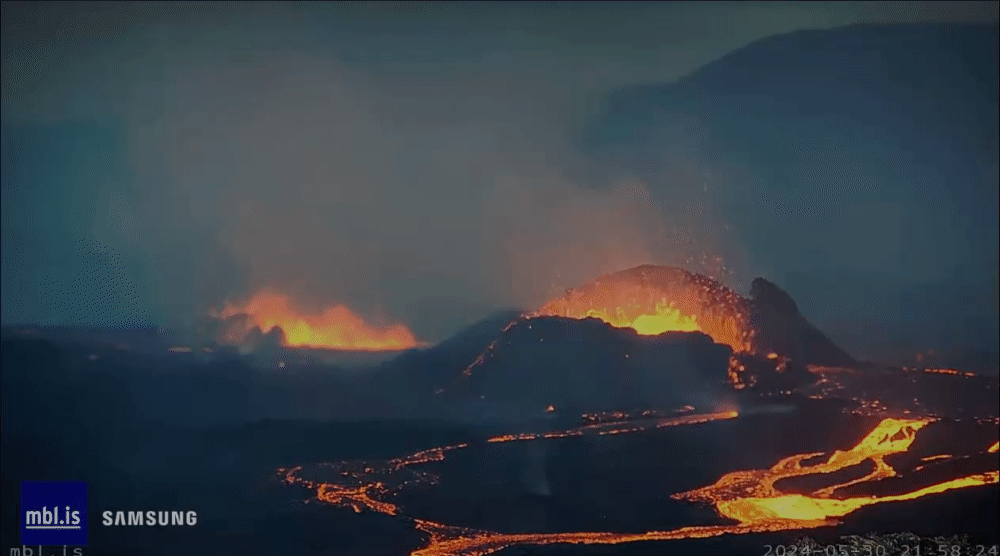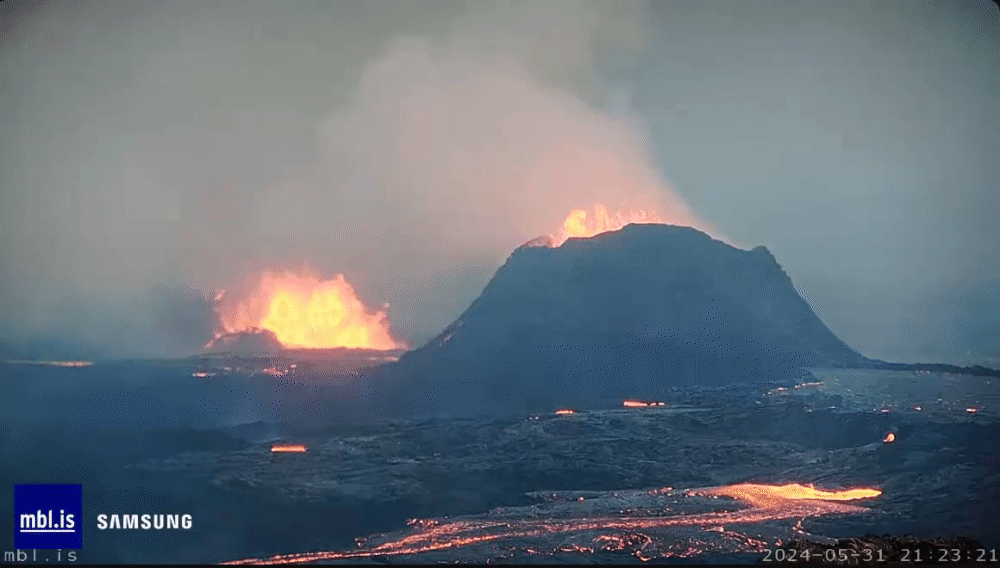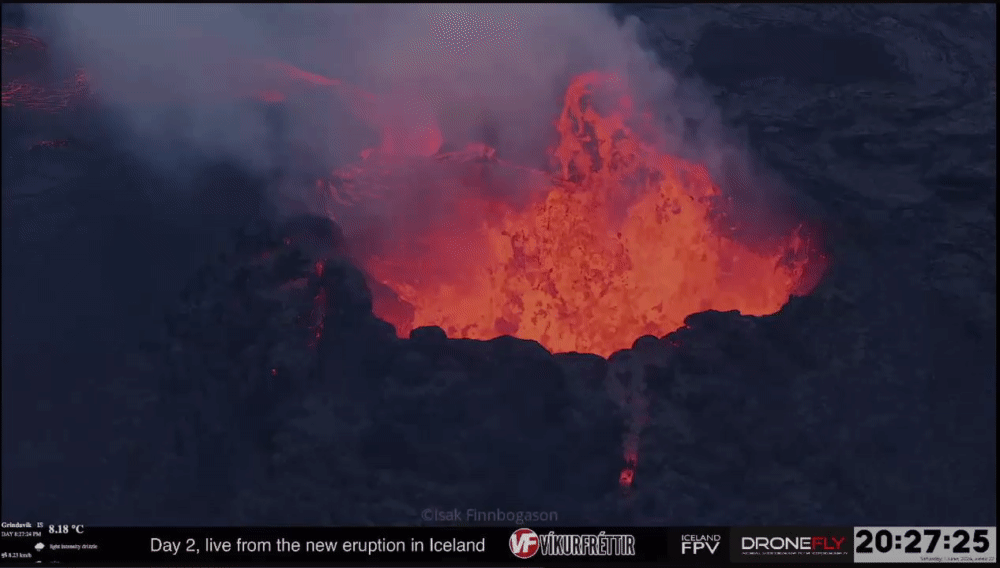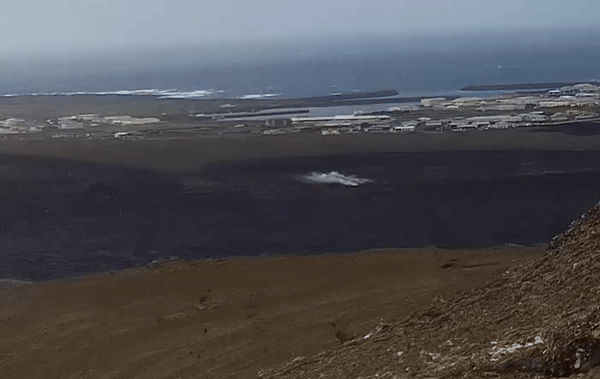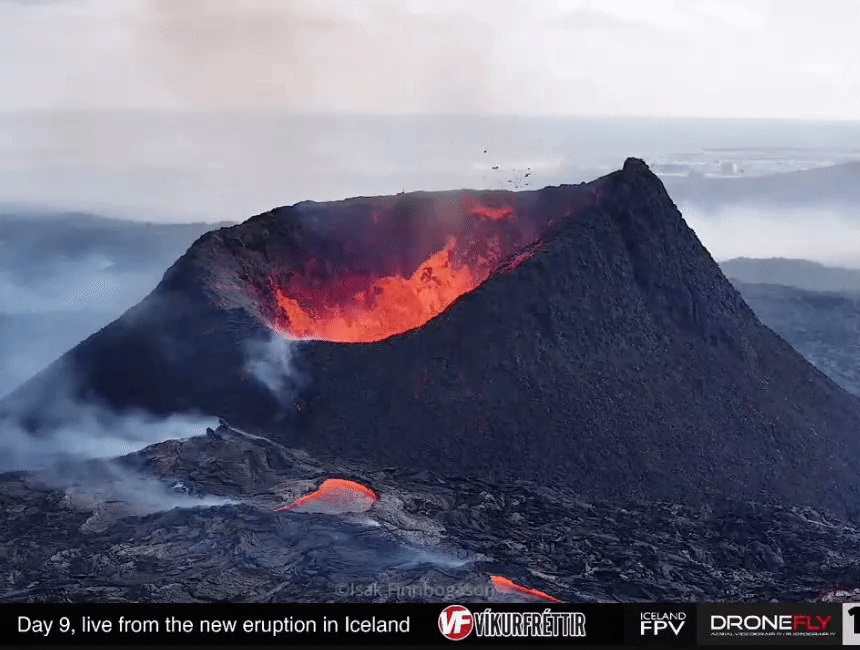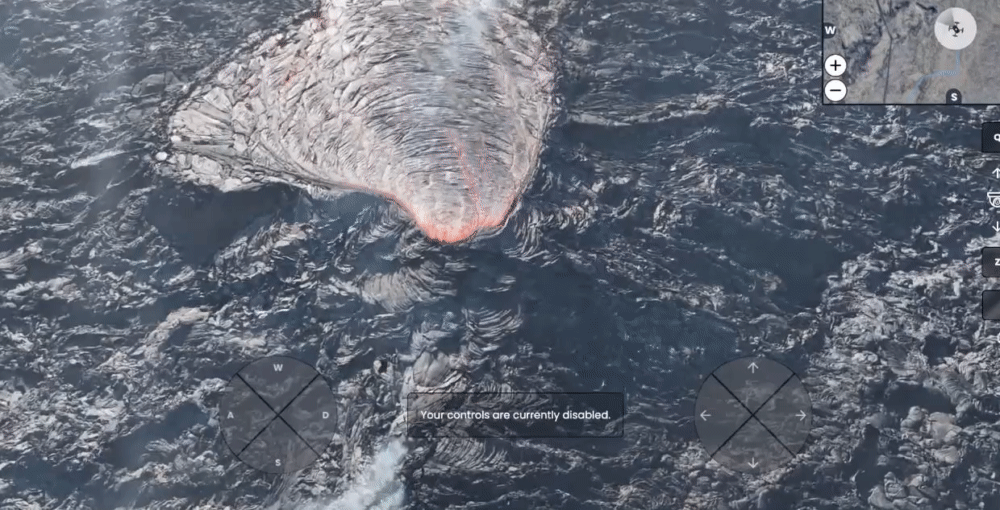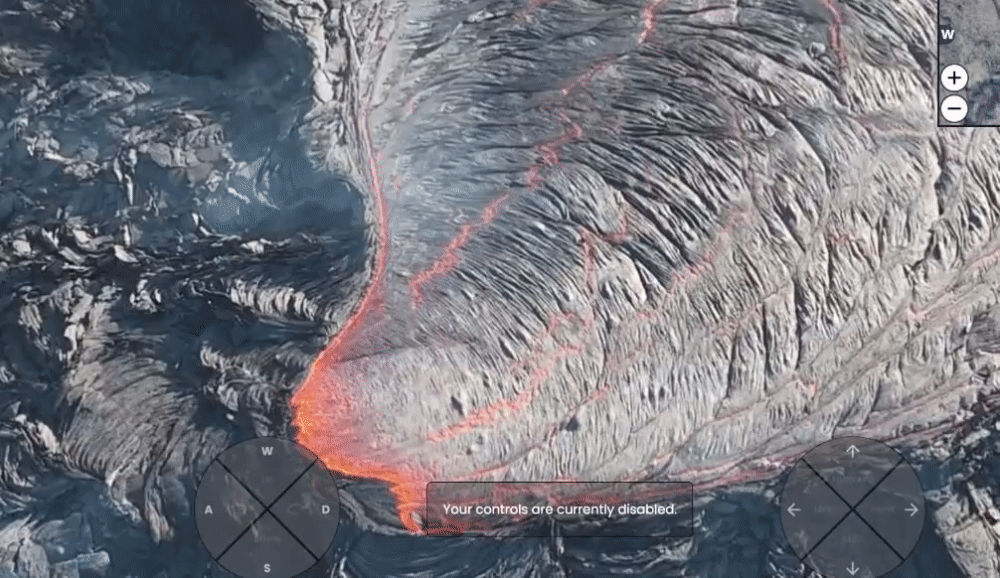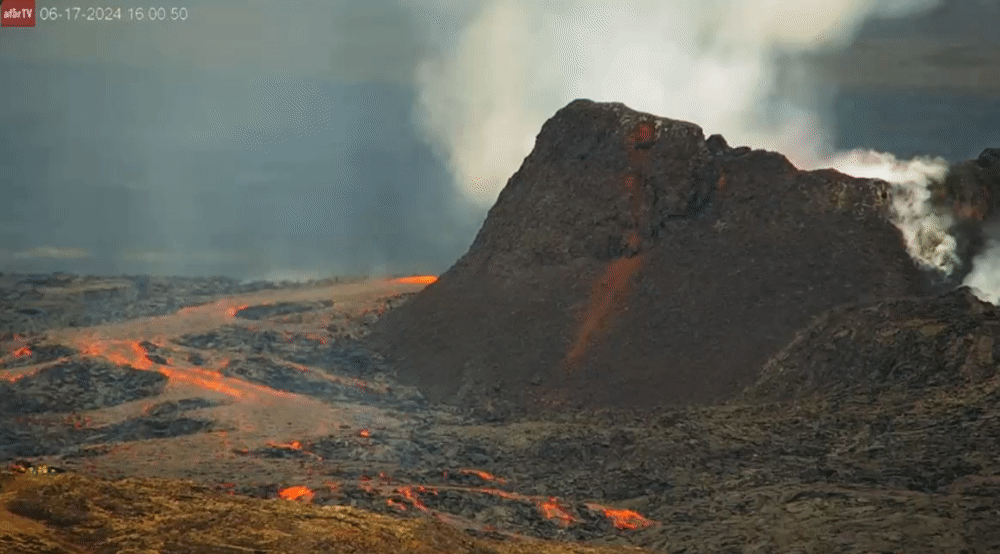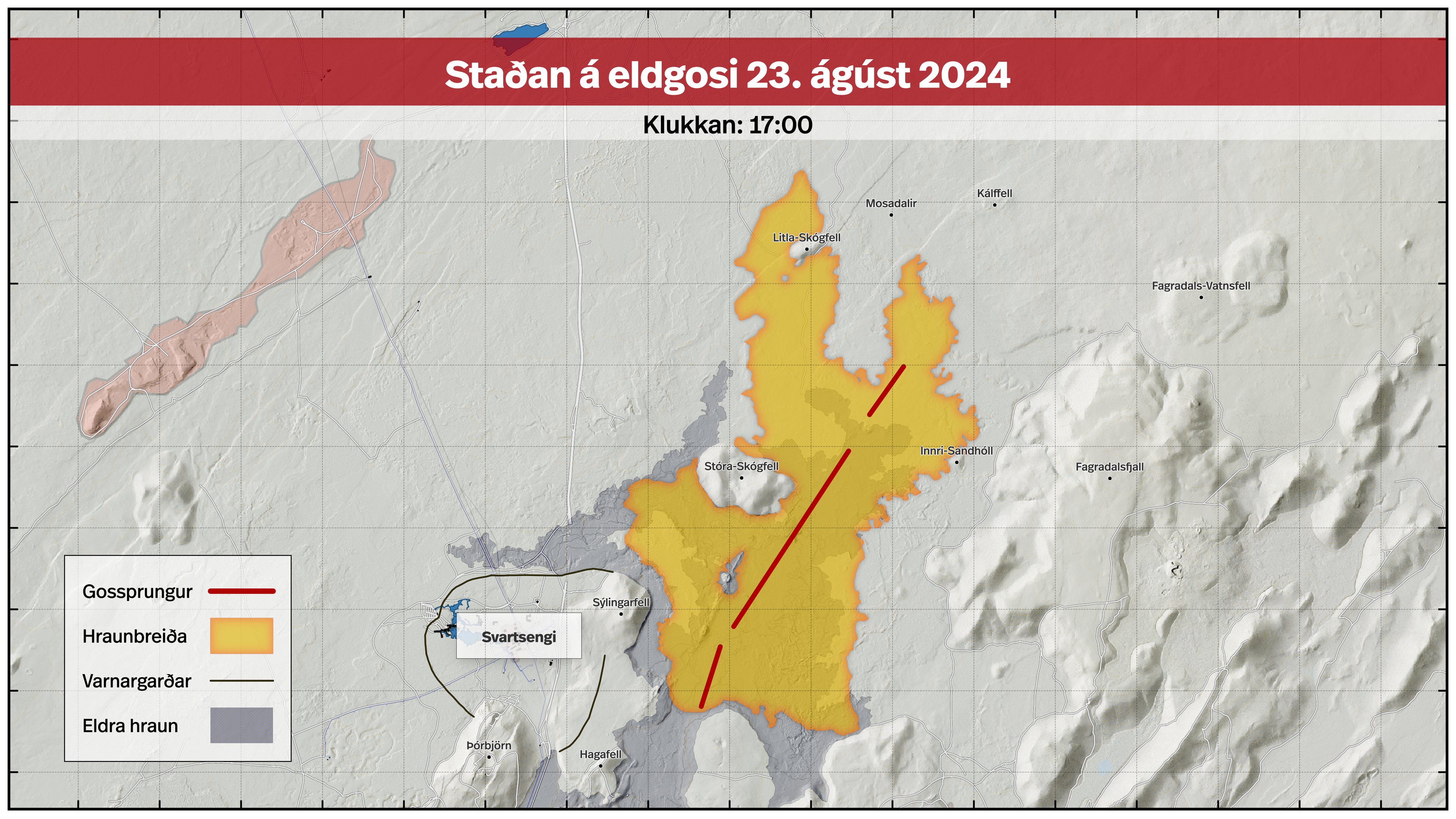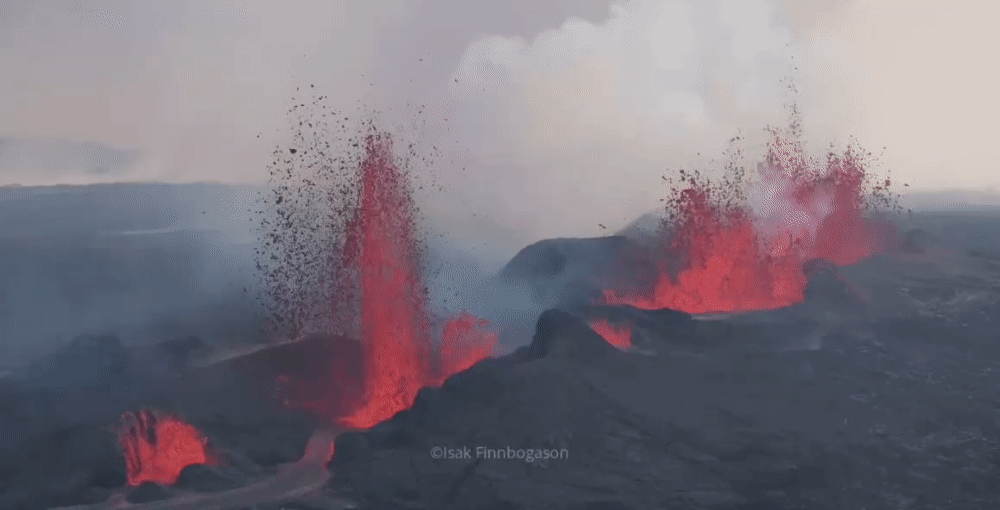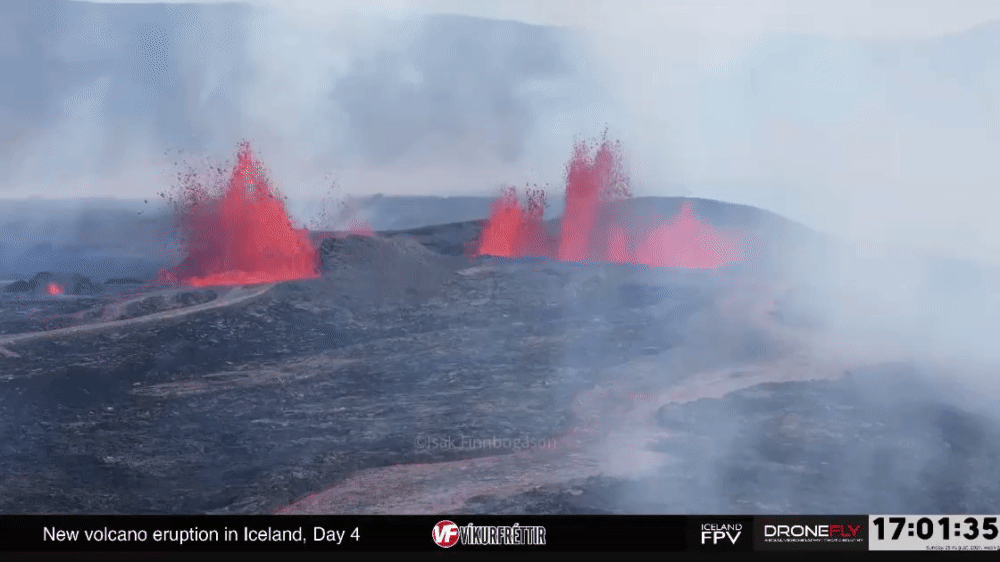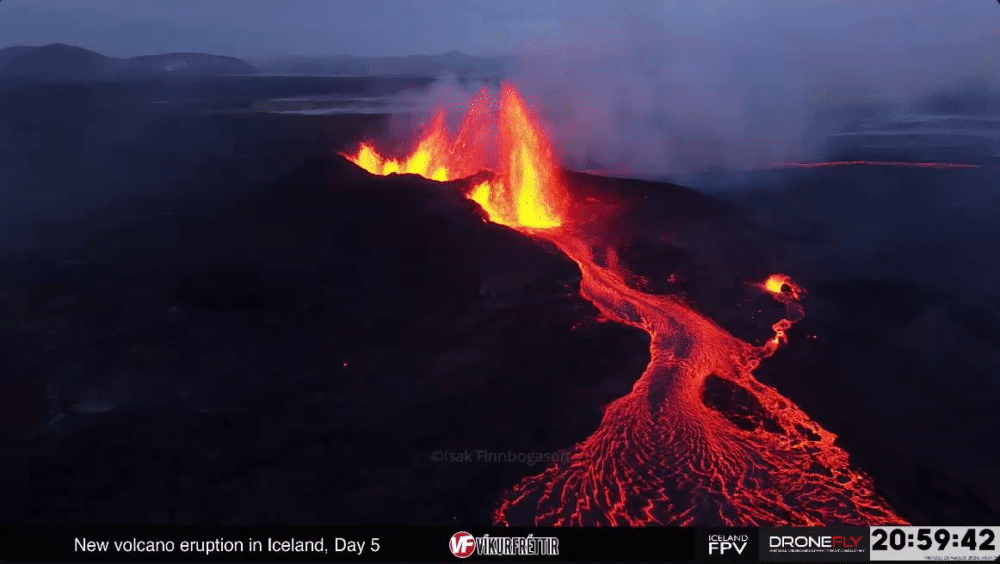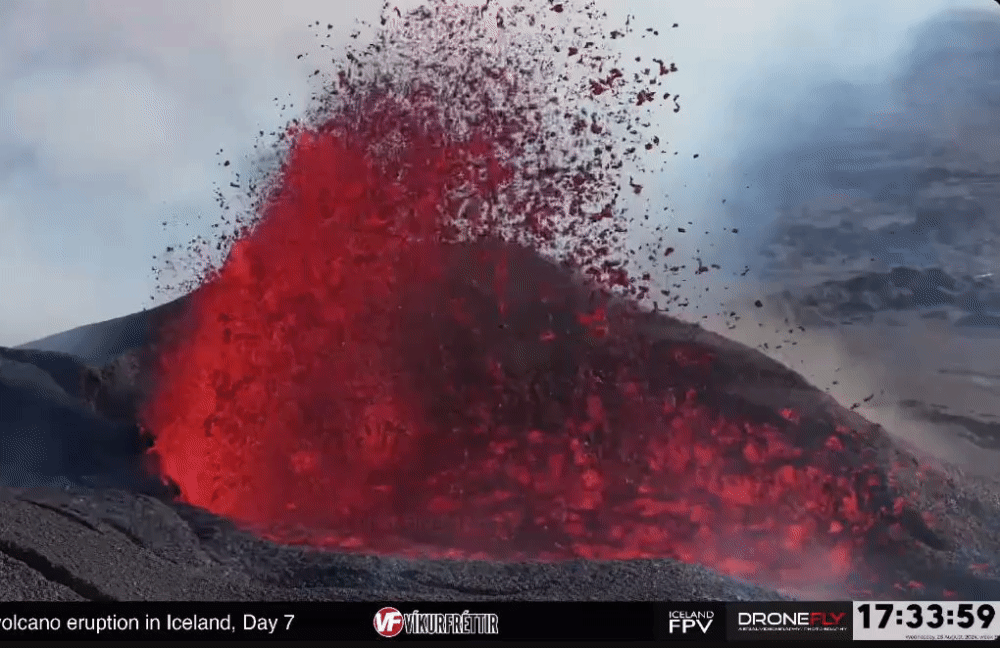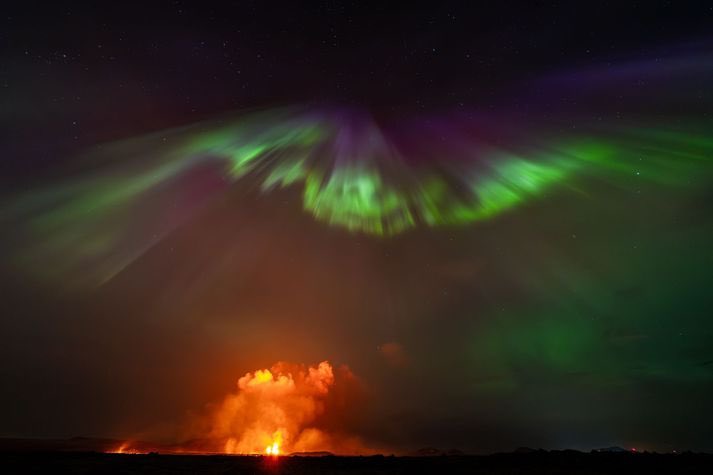WKN Weer, Klimaat en Natuurrampen
Lees alles over het onstuimige weer op onze planeet, volg orkanen en tornado's, zie hoe vulkanen uitbarsten en hoe Moeder Aarde beeft bij een aardbeving. Alles over de verwoestende kracht van onze planeet en tal van andere natuurverschijnselen.



informatie:
http://en.vedur.is/earthquakes-and-volcanism/earthquakes/
http://nl.wikipedia.org/wiki/Gr%C3%ADmsv%C3%B6tn
http://www.jonfr.com/volcano/
http://www.barthokriek.nl/ondertiteling/lijsten/vulkanologie.htm
Metingen & Bevingen
Aardbevingen IJsland
http://hraun.vedur.is/ja/vatnajokulsvoktun/grf_trem.html
http://hraun.vedur.is/ja/englishweb/tremor.html
Metingsoverzicht per gebied
Waar zitten de bevingen - 3D view
De verzakking van de Bardarbunga caldera
Bevingen over het eiland heen
Meeste meet gegevens die hier boven staan op 1 pagina verzameld
Interactief kaartje met o.a. bevingen. (druk op de knop layers en kies earthquakes)
3D Aardbevingsmap
Live Aardbevingsmap
Nieuws:
http://www.ijsland-enzo.nl/index.asp
http://www.icenews.is/
http://icelandreview.com/
http://www.luchtvaartnieuws.nl/
https://www.ruv.is/fretti(...)a-gasmaelinga-396985
Webcams:
http://www.livefromiceland.is/webcams/bardarbunga/
http://www.livefromiceland.is/webcams/bardarbunga-2/
https://www.ruv.is/frett/(...)svaedinu-borgarfjall
https://www.visir.is/g/20(...)-i-beinni-utsendingu
https://www.vf.is/frettir/keilir-i-beinni-utsendingu-vikurfretta
Relevante en wellicht interessante topics:
WKN / Adembenemend Noorderlicht #3
WKN / [Vulkanen] The Ring of Fire #8: Het rommelt en borrelt
WKN / Aardbevingen #22


En terecht. Weg met walvisvissersquote:Op zondag 17 maart 2024 00:09 schreef Momo het volgende:
Lava komt nu tegen barrier aan bij Grindavik
I've got 99 problems, but a bitch ain't one.


Bij the weg, ik had een nieuw floppik moeten openen, begrijp ik!? Dat had ik niet door (kzit op mijn feun te fokken, waardoor ik iets minder overzicht heb)
I've got 99 problems, but a bitch ain't one.


ja maar er ligt nu een defensive wallquote:Op zondag 17 maart 2024 00:33 schreef aloa het volgende:
En de lava stroomt richting Grindavík.
[ afbeelding ]


Als het door blijft stromen zou het over een paar uur in de zee belanden.quote:Op zondag 17 maart 2024 00:37 schreef aloa het volgende:
[..]
En dan hopen maar dat die de lava tegenhoudt.


Bijgewerkte waarschuwing:
• Lava stroomt door naar het zuiden en zuidoosten.
• De snelheid van de lavastroom is ongeveer 1 km per uur.
• Als de kracht van de uitbarsting onveranderd blijft, is het mogelijk dat de lava de zee bereikt net ten oosten van het Þórkötluhverfi-gebied in Grindavík.
https://twitter.com/RUVfr(...)I4rTYJ2qdZ06sxQ&s=19
• Lava stroomt door naar het zuiden en zuidoosten.
• De snelheid van de lavastroom is ongeveer 1 km per uur.
• Als de kracht van de uitbarsting onveranderd blijft, is het mogelijk dat de lava de zee bereikt net ten oosten van het Þórkötluhverfi-gebied in Grindavík.
https://twitter.com/RUVfr(...)I4rTYJ2qdZ06sxQ&s=19


1000+ graden celsius als je het aanraaktquote:Op zondag 17 maart 2024 01:50 schreef koffiekoekjes het volgende:
Hoe warm is zo'n lavastroom eigenlijk als je er naast of in de buurt staat?
And what rough beast, its hour come round at last,
Slouches towards Bethlehem to be born?
Slouches towards Bethlehem to be born?


Ja zonder aan te raken dus, hoeveel hitte straalt zo'n stroom uitquote:Op zondag 17 maart 2024 02:09 schreef Perrin het volgende:
[..]
1000+ graden celsius als je het aanraakt


Nog steeds lekker aant spuwen.quote:Op zondag 17 maart 2024 00:09 schreef Momo het volgende:
Lava komt nu tegen barrier aan bij Grindavik


De stralingshitte van zijn broertje was redelijk indrukwekkend, kan ik je vertellenquote:Op zondag 17 maart 2024 02:09 schreef Perrin het volgende:
[..]
1000+ graden celsius als je het aanraakt
Ik was bij de uitbarsting van 2022 en op 300 meter afstand was de hitte op je gezicht en handen al niet echt prettig meer (de rest van je lichaam was bedekt met kleding, dus daar voelde je niks)
I've got 99 problems, but a bitch ain't one.


Het kruipt heeeel langzaam, maar misschien dat het over een paar uur de zee nog bereikt. Het moet eerst nog een weg oversteken.


Volgens mij heeft ie gisteren behoorlijk gecashtquote:


Waarmee? Verkocht?quote:Op dinsdag 19 maart 2024 18:17 schreef chufi het volgende:
[..]
Volgens mij heeft ie gisteren behoorlijk gecasht
-edit- wacht even je bedoelt cashen tijdens filmen


De drone heeft, vanwege wind, een noodlanding moeten maken.quote:
Dus geen beelden meer na een tijdje
Isak heeft de coördinaten en probeert hem terug te vinden.


Die missie van gisteren was echt super mooiquote:Op dinsdag 19 maart 2024 19:43 schreef Ebinas het volgende:
[..]
De drone heeft, vanwege wind, een noodlanding moeten maken.
Dus geen beelden meer na een tijdje
Isak heeft de coördinaten en probeert hem terug te vinden.


Die ga ik nu dan maar even bekijken.quote:Op dinsdag 19 maart 2024 19:45 schreef chufi het volgende:
[..]
Die missie van gisteren was echt super mooi
Nou ja even.....3,5 uur


De gleuf is nog bijzonder actief dit keer na 4 dagen bijna, vorige keer was hij maar een dag actief ofzo.


Actieve gleuvenquote:Op dinsdag 19 maart 2024 22:36 schreef Momo het volgende:
De gleuf is nog bijzonder actief dit keer na 4 dagen bijna, vorige keer was hij maar een dag actief ofzo.
I've got 99 problems, but a bitch ain't one.


Op de drone beelden net gingen 2 bulldozers bij de greenhouse over een lava field dat nog warm was ... wat en hoe werd nog niet duidelijk ....quote:Op donderdag 21 maart 2024 17:58 schreef aloa het volgende:
Momenteel weinig te zien vanwege de sneeuwstorm die nu IJsland teistert...


Lava breekt door een beschermdijk en in no time wordt de groeve die ze gebruiken om die dijken te bouwen weer gevuld...


Komt al die lava nu uit die vents een stuk verderop?quote:Op donderdag 21 maart 2024 20:14 schreef chufi het volgende:
Lava breekt door een beschermdijk en in no time wordt de groeve die ze gebruiken om die dijken te bouwen weer gevuld...
[ afbeelding ]
Before I die, I’m going to eat a bag of unpopped popcorn. That should make the cremation a little more interesting.


yep en nu nog steeds livequote:Op donderdag 21 maart 2024 20:21 schreef pullup het volgende:
[..]
Komt al die lava nu uit die vents een stuk verderop?


Dan is ie wel een stuk heftiger aan het losgaan dan de vorige paar keer zegquote:
Before I die, I’m going to eat a bag of unpopped popcorn. That should make the cremation a little more interesting.


Veel langer ook, dan de afgelopen keren.quote:Op donderdag 21 maart 2024 20:23 schreef pullup het volgende:
[..]
Dan is ie wel een stuk heftiger aan het losgaan dan de vorige paar keer zeg


Het is al een paar dagen bezig en lijkt dat het nog wel ff kan duren ...quote:Op donderdag 21 maart 2024 20:23 schreef pullup het volgende:
[..]
Dan is ie wel een stuk heftiger aan het losgaan dan de vorige paar keer zeg


Zekers. Bij de vorige keren was er de volgende dag al bijna niets meer van over en een dag later was het uitgedoofd.quote:Op donderdag 21 maart 2024 20:25 schreef aloa het volgende:
[..]
Veel langer ook, dan de afgelopen keren.


Klopt ja.quote:Op donderdag 21 maart 2024 20:31 schreef DemonRage het volgende:
[..]
Zekers. Bij de vorige keren was er de volgende dag al bijna niets meer van over en een dag later was het uitgedoofd.
Dat andere systeem 2 of 3 jaar terug duurde meerdere weken. Deze kan ook nog wel even doorgaan.


quote:Op donderdag 21 maart 2024 20:37 schreef chufi het volgende:
Wow hij mag gewoon naar die plek .... hij voelt nu de warmte
Hij is nu dichtbij idd.


Hij zit in één van de witte auto'squote:Op donderdag 21 maart 2024 20:42 schreef DemonRage het volgende:
[..]
[ afbeelding ]
Hij is nu dichtbij idd.


quote:Iceland volcano: Gigantic plume of toxic gas from latest eruption is moving across Europe, satellite data shows
A massive column of sulfur dioxide that was pumped out by the erupting volcano on Iceland's Reykjanes Peninsula is currently traveling across northern Europe. Scientists are concerned it could impact the ozone layer.
Scientists are tracking a massive plume of toxic gas moving across northern Europe that was spat out by the ongoing volcanic eruption in Iceland. The gas cloud is unlikely to cause any serious health problems. However, it could impact the ozone hole above the Arctic, experts warn.
On March 16, an underground volcano in Icealnd's Reykjanes Peninsula blew its top for the fourth time in as many months, opening up the largest fissure of the current eruption cycle and unleashing a massive lava flow that narrowly missed the evacuated town of Grindavík. There were initially fears that the lava flow could reach the sea and unleash a plume of hydrochloric acid, which would have been "life-threatening" to anyone close to the coastline, Live Science previously reported. However, the lava never reached the shore.
But the eruption did release sulfur dioxide — a colorless, toxic gas that can be extremely dangerous in high concentrations.
On March 17, the volcano was spitting out around 110 pounds (50 kilograms) of sulfur dioxide every second, according to a translated statement from the Icelandic Met Office. Workers at the nearby Svartsengi power plant were evacuated from the facility due to high levels of the gas, Icelandic news site RÚV reported, and locals were temporarily warned to stay inside, according to Iceland's Civil Protection.
Sulfur dioxide emissions have diminished significantly since March 18, but new data from the Copernicus Atmosphere Monitoring Service (CAMS) — part of the European Union's Copernicus program, which tracks weather and climate changes using satellite data — shows that the initial outpouring of gas formed a 3-mile-tall (5 kilometers) concentrated column that has since blown toward other countries in northern Europe.


Oh how you'd have a happy life, if you did the things you like


op zoek naar zn lost dronequote:Op zaterdag 23 maart 2024 16:25 schreef DemonRage het volgende:
Hij heeft nu wel heel mooi weer om te vliegen.


Kan nu ook naar nummer twee gaan zoeken. Tijdens een wilde vlucht geraakt door lavabommen en gecrasht!quote:
Voorheen Post ID 101472


Denk niet dat daar nog wat van teruggevonden gaat worden ......quote:Op zondag 24 maart 2024 13:30 schreef Estate2 het volgende:
[..]
Kan nu ook naar nummer twee gaan zoeken. Tijdens een wilde vlucht geraakt door lavabommen en gecrasht!


Zijn drone is down 
Hij vloog over een van de kraters...
[ Bericht 16% gewijzigd door #ANONIEM op 24-03-2024 17:10:41 ]
Hij vloog over een van de kraters...
[ Bericht 16% gewijzigd door #ANONIEM op 24-03-2024 17:10:41 ]


Ik was te laat, maar teruggekeken ... ik vond toch al dat ie wel erg laag vloog ...quote:Op zondag 24 maart 2024 17:08 schreef aloa het volgende:
Zijn drone is down
Hij vloog over een van de kraters...


Wel vette beeldenquote:
Is ie al aan het crowdfunden voor nieuwen?
Oh how you'd have a happy life, if you did the things you like


Dat deed hij ook idd.quote:Op zondag 24 maart 2024 17:15 schreef chufi het volgende:
[..]
Ik was te laat, maar teruggekeken ... ik vond toch al dat ie wel erg laag vloog ...


Hij krijgt een hoop donaties via de chat van over de hele wereldquote:Op zondag 24 maart 2024 17:20 schreef Molo het volgende:
[..]
Wel vette beelden
Is ie al aan het crowdfunden voor nieuwen?


Bij de eruptie van vorige maand kwam er binnen een half uur zeker 1000 dollar aan donaties binnen dus die drone komt vast wel goedquote:Op zondag 24 maart 2024 17:38 schreef chufi het volgende:
[..]
Hij krijgt een hoop donaties via de chat van over de hele wereld


Deze had ie geleendquote:Op zondag 24 maart 2024 17:43 schreef Momo het volgende:
[..]
Bij de eruptie van vorige maand kwam er binnen een half uur zeker 1000 dollar aan donaties binnen dus die drone komt vast wel goed


quote:Op zondag 24 maart 2024 17:49 schreef Momo het volgende:
[..]
"Waar is de drone die ik je had geleend?"
[ afbeelding ]
Passend
Oh how you'd have a happy life, if you did the things you like


Aantal drones verzwolgen:
Sundhnúkur - 1 ?
Fagradalsfjall - meer dan 10 ?
[ Bericht 9% gewijzigd door DemonRage op 25-03-2024 06:56:44 ]
Sundhnúkur - 1 ?
Fagradalsfjall - meer dan 10 ?
[ Bericht 9% gewijzigd door DemonRage op 25-03-2024 06:56:44 ]


Is er een aardbeving of waait het zo hard bij die camera's?quote:
En dank voor het delen van de update, imposante beelden!
Oh how you'd have a happy life, if you did the things you like


Denk dat de wind soms de cameras doet trillen want aardbevingen zijn er niet veelquote:Op woensdag 27 maart 2024 23:07 schreef Molo het volgende:
[..]
Is er een aardbeving of waait het zo hard bij die camera's?
En dank voor het delen van de update, imposante beelden!


quote:Earthquake swarm in Askja caldera, ground deformation continues, Iceland
A seismic swarm occurred in the northwestern part of the Askja caldera in Iceland on March 25, 2024.
The Icelandic Met Office (IMO) detected about 30 earthquakes in the swarm between 08:00 and 12:00 UTC. The largest was M3.5 at a depth of 5 km (3.1 miles).
Three earthquakes with magnitudes between M2 and M2.5 were also detected, while the rest of the activity was characterized by smaller events.
Overall, the seismic activity in Askja has been quite stable between months and unchanged until March 25. “Looking back, we can see that earthquakes with magnitude above M3 were detected in January 2022 and October 2021,” IMO said.
eformation at Askja continued with a stable rate for two years since the end of summer 2021. Last autumn, the GNSS data indicated decreased deformation rates but the most recent ground deformation measurements based on GNSS data suggest that the rate has increased again, even though it remains at lower rates as observed prior to the autumn in 2023.
Additional data, which will be collected in the next few days, will help in clarifying and confirming the trend of the deformation process in the area, IMO said.
A satellite image acquired on March 19 shows a typical winter view of Askja Lake, where most of the lake is covered by ice except for those two well-known areas characterized by persistent geothermal activity. In February last year, Askja Lake was ice-free and considered unusual for that time of year.
The last eruptive period at this volcano lasted from October to December 1961 (VEI 2).
Askja is a large basaltic central volcano that forms the Dyngjufjöll massif. It is truncated by three overlapping calderas, the largest of which is 8 km (5 miles) wide and may have been produced primarily from subglacial ring-fracture eruptions rather than by subsidence.
A major explosive eruption (VEI 5) took place from January 1 to October 17, 1875, and entered history as one of Iceland’s largest eruptions. This eruption resulted in the formation of a smaller 4.5 km (2.8 miles) wide caldera, now filled by Öskjuvatn Lake, that truncates the rim of the larger central caldera.
A major rhyolitic explosive eruption from Dyngjufjöll about 10 000 years ago was in part associated with the formation of Askja caldera. Many postglacial eruptions also occurred along the ring-fracture.
The 100 km (62 miles) long Askja fissure swarm, which includes the Sveinagja graben, is also related to the Askja volcanic system, as are several small shield volcanoes such as Kollatadyngja.
Twentieth-century eruptions have produced lava flows from vents located mostly near Öskjuvatn lake


Hij heeft weer een drone.quote:


Fijne hot tubquote:Op donderdag 28 maart 2024 21:35 schreef DemonRage het volgende:
[ afbeelding ]
Blup!
[ afbeelding ]
Nog meer blup!
I've got 99 problems, but a bitch ain't one.


quote:
My age is very
Inappropriate
for my behavior
Inappropriate
for my behavior


Het meeste waar wij tegenaan kijken is lava die al gestold is en enigszins afgekoeld is, rood en donkerrood gloeiend omdat het in contact is met de buitenlucht, maar onder heel dat veld is de lava nog heel heet en vloeibaar. Op plekken waar het vrij naar buiten kan stromen zie je dan weer de gele lava.quote:Op vrijdag 5 april 2024 20:12 schreef chufi het volgende:
ff kijken hoe het er nu live bijstaat ... Isak is weer live
Volgens mij ligt er inmiddels een heel reservoir aan hete lava ingekapseld in dat veld wat heel lang op temperatuur kan blijven omdat het ingekapseld zit.


I know ... een hooop stroomt gewoon onder de toplaag door ... Je ziet het er uit stromen en dat gaat ergens heen ... en zoals het met vloeistoffen gewoon is stroomt het van hoog naar laag ...quote:Op vrijdag 5 april 2024 21:46 schreef DemonRage het volgende:
[..]
Het meeste waar wij tegenaan kijken is lava die al gestold is en enigszins afgekoeld is, rood en donkerrood gloeiend omdat het in contact is met de buitenlucht, maar onder heel dat veld is de lava nog heel heet en vloeibaar. Op plekken waar het vrij naar buiten kan stromen zie je dan weer de gele lava.
Volgens mij ligt er inmiddels een heel reservoir aan hete lava ingekapseld in dat veld wat heel lang op temperatuur kan blijven omdat het ingekapseld zit.


Ik kijk regelmatig naar de webcams met mijn dochter van 7, die vindt het helemaal geweldig. Educatie op zijn tofst 
Oh how you'd have a happy life, if you did the things you like


Ik verwacht eigenlijk dat de hele wall daarboven instort , mu zeker met die overflowquote:Op zondag 7 april 2024 18:48 schreef DemonRage het volgende:
Holy shit... het braakt nu lava.
Zou de afvoer die aan de onderkant zat afgedicht zijn?


Hij mag niet naar binnen .... ff afwachtenquote:


daarom is het gebied nu afgesloten ...quote:Op zondag 7 april 2024 19:00 schreef DemonRage het volgende:
Er komt zo een lavatsunami aan nu alle lava de zijkant van de cone wegvreet.


IJsland loopt nu 2 uur achter op onze tijd idd.quote:Op zondag 7 april 2024 19:11 schreef aloa het volgende:
Live om 19 uur staat er. Is dat IJsland tijd? Want het is daar nog maar 17.11 nu.


Nog even wachten dusquote:Op zondag 7 april 2024 19:14 schreef DemonRage het volgende:
[..]
IJsland loopt nu 2 uur achter op onze tijd idd.


Is onze tijd .. YT regelt dat automatisch volgens mij ... Hij wacht in Grindavik op toestemming , autoriteiten zijn een risico-analyse aan het doenquote:Op zondag 7 april 2024 19:11 schreef aloa het volgende:
Live om 19 uur staat er. Is dat IJsland tijd? Want het is daar nog maar 17.11 nu.


Ff afwachten dus:quote:Op zondag 7 april 2024 19:24 schreef chufi het volgende:
[..]
Is onze tijd .. YT regelt dat automatisch volgens mij ... Hij wacht in Grindavik op toestemming , autoriteiten zijn een risico-analyse aan het doen


Hij begint nu, "sorry for the delay"
Free Assange! Hack the Planet
[b]Op dinsdag 6 januari 2009 19:59 schreef Papierversnipperaar het volgende:[/b]
De gevolgen van de argumenten van de anti-rook maffia
[b]Op dinsdag 6 januari 2009 19:59 schreef Papierversnipperaar het volgende:[/b]
De gevolgen van de argumenten van de anti-rook maffia


Zelfs die drone gaat niet begrijp ikquote:
Before I die, I’m going to eat a bag of unpopped popcorn. That should make the cremation a little more interesting.


Time stamps
Rim overflow end, mbl Sandholl close 21:32:40/37:40,
3rd back spill 22:09:30,
19:28:24-20:39:45 small spot base of cone;
Cam2 21:36:49 back collapse/spill; mbl Hagafell 22:19:26 SE breakout
Rim overflow end, mbl Sandholl close 21:32:40/37:40,
3rd back spill 22:09:30,
19:28:24-20:39:45 small spot base of cone;
Cam2 21:36:49 back collapse/spill; mbl Hagafell 22:19:26 SE breakout


Ik dacht al dat ik op een van de webcams een drone zag vliegen tijdens de lavaval en die was niet van Isak.
Daar zijn blijkbaar deze beelden mee gemaakt:
Daar zijn blijkbaar deze beelden mee gemaakt:


Mooie beelden...quote:Op maandag 8 april 2024 18:38 schreef DemonRage het volgende:
Ik dacht al dat ik op een van de webcams een drone zag vliegen tijdens de lavaval en die was niet van Isak.
Daar zijn blijkbaar deze beelden mee gemaakt:
Isak staat vandaag voor 20:30 op de planning voor een nieuwe poging ...


Dat ze gewoon live op beeld verkolenquote:
Oh how you'd have a happy life, if you did the things you like


"Ja maar op Instagram zeiden ze dat het makkelijk kon..."quote:
Oh how you'd have a happy life, if you did the things you like


Nee nog iets verder naar het oosten ..quote:Op zaterdag 13 april 2024 13:36 schreef DemonRage het volgende:
[..]
Is dat niet bij Fagradalsfjall/Geldingadalir/Meradalir?


Vandaag waren ook weer momenten van verhoogde activiteit ...
Hij pruttelt nog steeds lekker door ..
Morgen 20 uur staat Isak weer gepland zag in op zn YT
Hij pruttelt nog steeds lekker door ..
Morgen 20 uur staat Isak weer gepland zag in op zn YT


Met die schaduw van de lava krijg je bestwel een 3d-effect:quote:


Heel bijzonder dit zegquote:
Before I die, I’m going to eat a bag of unpopped popcorn. That should make the cremation a little more interesting.


quote:Magma buildup raises risk of intensified eruption or new fissures in Iceland’s Reykjanes Peninsula
The Icelandic Met Office reports ongoing magma accumulation and land rise in Svartsengi, indicating a heightened risk for intensified volcanic activity or the formation of new fissures in the Reykjanes Peninsula.
The Icelandic Met Office (IMO) released a new update on May 7, 2024, detailing the continued accumulation of magma and land rise in the Svartsengi region of Iceland’s Reykjanes Peninsula.
According to their latest observations, magma is building up at a steady pace, increasing pressure in the magma chamber beneath Svartsengi. The ongoing geological activity raises the likelihood of intensified eruptions or new fissure formations in the region.
The Sundhnúks crater series is still erupting, although lava is currently flowing only a short distance from the crater, and activity has diminished in recent days.
The southern portion of the lava bed, situated near defenses to the east of Grindavík, has seen little to no change over the last week. Despite this slowdown, magma continues to accumulate, and the pressure inside the magma chamber remains high, suggesting an ongoing buildup that could fuel further volcanic activity.
Micro-seismic activity in the surrounding areas has shown a gradual increase, particularly north of the current crater between Sundhnúk and Stóri Skógfell, and south of Þorbjörn in the large graben near Grindavík.
This activity, most of which involves small earthquakes less than magnitude 1, is indicative of rising tension in and around the magma passage due to increased pressure in the Svartsengi magma chamber. This trend is monitored closely, as it could foreshadow an uptick in volcanic activity.
The Icelandic Met Office outlined two likely scenarios for the immediate future:
New fissures may open between Stóra-Scógfell and Hagafell, or an existing fissure may expand, leading to a sudden surge in lava flow comparable to the initial phase of the last eruption. This increase could occur with minimal or no advance warning. Alternatively, magma flow from the Svartsengi chamber to the active Sundhnúks crater may gradually increase until an equilibrium is reached between inflow and outflow.
Both scenarios carry inherent risks of increased volcanic activity, and authorities have issued warnings to local communities accordingly.
The Met Office emphasized that sudden series of small earthquakes, rapid land deformation, and pressure changes in boreholes would be key indicators of significant magma movement. They also caution that the warning period before such events could be less than 30 minutes, or even nonexistent.
There is uncertainty about how the earthquakes will progress now that the eruption has lasted for over a month and magma continues to accumulate in the magma chamber beneath Svartsengi. Although the above scenarios are considered the most probable, close monitoring is being conducted to see if magma might shift towards areas other than the Sundhnúks crater series. Special attention is being paid to areas north of Stóra-Scógfell and south of Hagafell and Þorbjörn.
If magma were to break through to the surface in regions that have not yet erupted, the seismic warnings would be more pronounced, presenting as much stronger and more intense seismic activity than what was observed before the previous eruptions.


quote:
Before I die, I’m going to eat a bag of unpopped popcorn. That should make the cremation a little more interesting.


Forse eruptie!
And what rough beast, its hour come round at last,
Slouches towards Bethlehem to be born?
Slouches towards Bethlehem to be born?


Google translate van de Icelandic Met Office website in het IJslands.quote:De vulkaan barstte uit
29.5.2024
Bijgewerkt op 29 mei om: 14:45 uur
Een uitbarsting begon op de Sundhnúks-kraterreeks op 12:46 vandaag
De lava stroomt over Grindavíkurveg
De kloof is nu ongeveer 3,4 km lang
De stroomsnelheid van lava wordt grofweg geschat op 1.500-2.000 m 3 /s
De seismische activiteit is snel afgenomen
Het lijkt erop dat de grootste kracht achter de uitbarsting zich nu aan de zuidkant van de kloof bevindt die eerder vandaag is geopend. Volgens informatie van de surveillancevlucht van de Kustwacht is er een vrij intense lavastroom rondom Hagafell in het oosten en vervolgens in het zuiden richting Melhólsnáma.
De meest zuidelijke opening van de kloof bevindt zich nu op minder dan een kilometer afstand van de verdedigingswerken ten noorden van Grindavík.
De eerste inschatting van wetenschappers is dat het begin van deze uitbarsting krachtiger is dan bij eerdere uitbarstingen, maar de stroomsnelheid van lava wordt grofweg geschat op 1.500-2.000 m 3 /s.
I've got 99 problems, but a bitch ain't one.


From the river to the seaquote:Op woensdag 29 mei 2024 17:59 schreef Ebinas het volgende:
Flink aan het werk weer in de achtergrond
[ afbeelding ]
I've got 99 problems, but a bitch ain't one.


Lijkt wel olie ofzo..quote:Op woensdag 29 mei 2024 18:04 schreef Ebinas het volgende:
wat zorgt voor al die rookontwikkeling?
[ afbeelding ]


Water en gassen die onder hoge druk opgelost zaten in de magma komen vrij bij atmosferische druk en die nemen weer stof mee.quote:Op woensdag 29 mei 2024 18:04 schreef Ebinas het volgende:
wat zorgt voor al die rookontwikkeling?
[ afbeelding ]
And what rough beast, its hour come round at last,
Slouches towards Bethlehem to be born?
Slouches towards Bethlehem to be born?


Ty!quote:Op woensdag 29 mei 2024 18:08 schreef Perrin het volgende:
[..]
Water en gassen die onder hoge druk opgelost zaten in de magma komen vrij bij atmosferische druk.


Wow! Machtig mooi!
Op maandag 9 oktober 2023 13:31 schreef Nova het volgende:[/b]
Oh schatje, wat lief van je om dat te zeggen! Jij bent echt een prins op het witte paard voor mij. Met jou voel ik me zo geliefd en speciaal. Laten we nog lang samen genieten van sprookjesachtige avonturen en elkaar verwennen met veel knuffels en kusjes. O+ naar jou, mijn lieve prins! :*
Oh schatje, wat lief van je om dat te zeggen! Jij bent echt een prins op het witte paard voor mij. Met jou voel ik me zo geliefd en speciaal. Laten we nog lang samen genieten van sprookjesachtige avonturen en elkaar verwennen met veel knuffels en kusjes. O+ naar jou, mijn lieve prins! :*


Lava komt op dit moment weer tegen de verdedigingsmuur aan, NAVO-communicatiecentrum zit achter andere muur.


Artikel 5!quote:Op woensdag 29 mei 2024 18:15 schreef Momo het volgende:
[ afbeelding ]
[ afbeelding ]
Lava komt op dit moment weer tegen de verdedigingsmuur aan, NAVO-communicatiecentrum zit achter andere muur.
Op maandag 9 oktober 2023 13:31 schreef Nova het volgende:[/b]
Oh schatje, wat lief van je om dat te zeggen! Jij bent echt een prins op het witte paard voor mij. Met jou voel ik me zo geliefd en speciaal. Laten we nog lang samen genieten van sprookjesachtige avonturen en elkaar verwennen met veel knuffels en kusjes. O+ naar jou, mijn lieve prins! :*
Oh schatje, wat lief van je om dat te zeggen! Jij bent echt een prins op het witte paard voor mij. Met jou voel ik me zo geliefd en speciaal. Laten we nog lang samen genieten van sprookjesachtige avonturen en elkaar verwennen met veel knuffels en kusjes. O+ naar jou, mijn lieve prins! :*


Het beste lijkt er wel weer van af te zijn inmiddels...
Salivili hipput tupput tapput äppyt tipput hilijalleen


Oh, dat is vrij dichtbij het dorp
In this world of evil and darkness I'm looking for the one girl that has the power to bring light into my heart. A light so pure that my evil thoughts about this world and the people living on it will vanish and I'll finally experience true love.


Ja de druk is uit de ketel ... nu kijken hoelang het nog na blijft sputteren ...quote:Op woensdag 29 mei 2024 19:58 schreef Dr_Flash het volgende:
Het beste lijkt er wel weer van af te zijn inmiddels...


Dat kan ik bevestigen (Ik was in 2022 op IJsland bij de uitbarsting iets verderop als de huidige).quote:Op donderdag 30 mei 2024 19:30 schreef chufi het volgende:
Net gebroken zwart glas .....
[ afbeelding ]
Als de lava (iig deze) eenmaal gestold is, is het het krokantste materiaal wat je je kunt voorstellen. Een soort Bros gemaakt van gemaakt van glas ipv chocola.
I've got 99 problems, but a bitch ain't one.


Obsidiaan ... maar lava heeft zoveel componenten waaruit vele verschillende gesteenten ontstaan .. allemaal afhankelijk van een hoop verschillende condities...quote:Op vrijdag 31 mei 2024 00:49 schreef Puntenjager het volgende:
[..]
Dat kan ik bevestigen (Ik was in 2022 op IJsland bij de uitbarsting iets verderop als de huidige).
Als de lava (iig deze) eenmaal gestold is, is het het krokantste materiaal wat je je kunt voorstellen. Een soort Bros gemaakt van gemaakt van glas ipv chocola.


Zijn dat de muren die ze onlangs gebouwd hebben of stonden die er al ?quote:Op donderdag 30 mei 2024 19:50 schreef Momo het volgende:
Zonder de verdedigingsmuren was er niet veel meer over van Grindavik
[ afbeelding ]


quote:Op donderdag 30 mei 2024 19:50 schreef Momo het volgende:
Zonder de verdedigingsmuren was er niet veel meer over van Grindavik
[ afbeelding ]
I've got 99 problems, but a bitch ain't one.


Lijkt me echt dweilen met de kraan open.quote:Op vrijdag 21 juni 2024 19:15 schreef chufi het volgende:
Ze blussen ook gewoon de lava om het proces maar te vertragen..
[ afbeelding ]
Dan moet er toch echt wat grover geschut worden ingezet.


Ja uiteindelijk wel , maar misschien ligt er dan wel een hoge dijk ter bescherming van het powerstation en de Blue Lagoonquote:Op vrijdag 21 juni 2024 19:17 schreef aloa het volgende:
[..]
Lijkt me echt dweilen met de kraan open.
Dan moet er toch echt wat grover geschut worden ingezet.


Dan moeten ze zo te zijn nog flink doorbouwenquote:Op vrijdag 21 juni 2024 19:32 schreef chufi het volgende:
[..]
Ja uiteindelijk wel , maar misschien ligt er dan wel een hoge dijk ter bescherming van het powerstation en de Blue Lagoon
Altijd onderweg naar het avontuur


Heet klusje voor de brandweerquote:Op vrijdag 21 juni 2024 19:15 schreef chufi het volgende:
Ze blussen ook gewoon de lava om het proces maar te vertragen..
[ afbeelding ]
Op maandag 9 oktober 2023 13:31 schreef Nova het volgende:[/b]
Oh schatje, wat lief van je om dat te zeggen! Jij bent echt een prins op het witte paard voor mij. Met jou voel ik me zo geliefd en speciaal. Laten we nog lang samen genieten van sprookjesachtige avonturen en elkaar verwennen met veel knuffels en kusjes. O+ naar jou, mijn lieve prins! :*
Oh schatje, wat lief van je om dat te zeggen! Jij bent echt een prins op het witte paard voor mij. Met jou voel ik me zo geliefd en speciaal. Laten we nog lang samen genieten van sprookjesachtige avonturen en elkaar verwennen met veel knuffels en kusjes. O+ naar jou, mijn lieve prins! :*


Ze doen er in elk geval alles aan om het te voorkomen idd.quote:Op vrijdag 21 juni 2024 19:32 schreef chufi het volgende:
[..]
Ja uiteindelijk wel , maar misschien ligt er dan wel een hoge dijk ter bescherming van het powerstation en de Blue Lagoon


Dat wisten we nog niet ...quote:Op woensdag 26 juni 2024 17:29 schreef Frutsel het volgende:
Onderzoek: IJslandse vulkaanuitbarstingen kunnen decennialang aanhouden - https://nos.nl/l/2526239


https://www.ijsland-enzo.(...)spagina.asp?tabsel=0quote:Verhoogde kans op een uitbarsting binnen de grenzen van Grindavík
De kans op een magma-run of een nieuwe vulkaanuitbarsting in de komende drie weken is aanzienlijk toegenomen. Dit staat in een bericht van het Met Office.
Er staat dat volgens waarschijnlijkheidsberekeningen ongeveer dertien miljoen kubieke meter magma aan de magmakamer onder Svartsengi is toegevoegd.
"Vandaag heeft de toegevoegde hoeveelheid magma de ondergrens bereikt van de hoeveelheid magma die noodzakelijk wordt geacht om een nieuwe magma-run en zelfs een vulkaanuitbarsting te veroorzaken", aldus de aankondiging.


https://www.ruv.is/englis(...)n-three-weeks-417878quote:Op donderdag 18 juli 2024 17:31 schreef aloa het volgende:
[..]
https://www.ijsland-enzo.(...)spagina.asp?tabsel=0
Een uitgebreider artikel
In this world of evil and darkness I'm looking for the one girl that has the power to bring light into my heart. A light so pure that my evil thoughts about this world and the people living on it will vanish and I'll finally experience true love.


Er is nog steeds een aanzienlijke kans op een magma-run binnen Grindavík
De seismische activiteit op het schiereiland Reykjanes neemt toe en er wordt aangenomen dat er in de komende drie tot vier weken een uitbarsting zal plaatsvinden. Er zou een kloof kunnen ontstaan binnen Grindavík.
Landstijging gaat verder in Svartsengi in Reykjanes en de kans is groot dat er een kloof ontstaat binnen Grindavík. De seismische activiteit in het gebied is de afgelopen weken toegenomen. De risicobeoordeling is dinsdag bijgewerkt, waarbij het risico voor gebied vier, waar Grindavík ligt, als "aanzienlijk" wordt beoordeeld vanwege uitbarstingen, lavastromen en gasverontreiniging, vergeleken met "enkele".
Öhanna Malen Skúladóttir, expert op het gebied van natuurrampen bij het IJslandse Meteorologische Bureau, zegt dat uit gegevens blijkt dat de laatste uitbarstingen zich verder naar het zuiden hebben verplaatst, en dat de trend er daarom op wijst dat er mogelijk een ventilatieopening in Grindavík opengaat.
“Er is sprake van een voortdurende accumulatie van magma in de magmakamer onder Svartsengi en er wordt geschat dat er sinds de laatste uitbarsting ruim 13 miljoen kubieke meter is bijgekomen, wat boven onze drempelwaarden ligt. Er zijn uitbarstingen geweest aan die grenzen, maar als dit zich gedraagt als de Krafla-uitbarstingen, is er meer magma nodig voor elke magmastroom. We gaan ervan uit dat er zich 13 tot 19 miljoen kubieke meter magma moet ophopen, maar de laatste uitbarsting begon met ongeveer 20 miljoen kubieke meter magma. Als dit in een vergelijkbaar tempo doorgaat, verwachten we binnen de komende drie tot vier weken een uitbarsting."
https://www.ijsland-enzo.(...)spagina.asp?tabsel=0
De seismische activiteit op het schiereiland Reykjanes neemt toe en er wordt aangenomen dat er in de komende drie tot vier weken een uitbarsting zal plaatsvinden. Er zou een kloof kunnen ontstaan binnen Grindavík.
Landstijging gaat verder in Svartsengi in Reykjanes en de kans is groot dat er een kloof ontstaat binnen Grindavík. De seismische activiteit in het gebied is de afgelopen weken toegenomen. De risicobeoordeling is dinsdag bijgewerkt, waarbij het risico voor gebied vier, waar Grindavík ligt, als "aanzienlijk" wordt beoordeeld vanwege uitbarstingen, lavastromen en gasverontreiniging, vergeleken met "enkele".
Öhanna Malen Skúladóttir, expert op het gebied van natuurrampen bij het IJslandse Meteorologische Bureau, zegt dat uit gegevens blijkt dat de laatste uitbarstingen zich verder naar het zuiden hebben verplaatst, en dat de trend er daarom op wijst dat er mogelijk een ventilatieopening in Grindavík opengaat.
“Er is sprake van een voortdurende accumulatie van magma in de magmakamer onder Svartsengi en er wordt geschat dat er sinds de laatste uitbarsting ruim 13 miljoen kubieke meter is bijgekomen, wat boven onze drempelwaarden ligt. Er zijn uitbarstingen geweest aan die grenzen, maar als dit zich gedraagt als de Krafla-uitbarstingen, is er meer magma nodig voor elke magmastroom. We gaan ervan uit dat er zich 13 tot 19 miljoen kubieke meter magma moet ophopen, maar de laatste uitbarsting begon met ongeveer 20 miljoen kubieke meter magma. Als dit in een vergelijkbaar tempo doorgaat, verwachten we binnen de komende drie tot vier weken een uitbarsting."
https://www.ijsland-enzo.(...)spagina.asp?tabsel=0
v


quote:Strong glacial flood in Mýrdalsjökull, Aviation Color Code for Katla raised to Yellow, Iceland
A strong glacial flood began in Mýrdalsjökull, an ice cap atop the Katla volcano in southern Iceland, around 11:00 UTC on July 27, 2024. This event prompted authorities to raise the Aviation Color Code for Katla volcano to Yellow.
The glacial flood increased the flow rate of the Skálm River to more than 1 000 m3 (35 300 feet3), resulting in the destruction of part of the ring road and a bridge over the river.
The National Police Commissioner’s Public Defense declared a level of uncertainty in consultation with the police chief in South Iceland. Additionally, the Icelandic Met Office (IMO) raised the Aviation Color Code for Katla volcano to Yellow.
The flow had decreased significantly by 21:00 UTC on July 27, IMO reported, adding that there were no signs of runoff reaching Múlakvísl or other rivers from Mýrdalsjökull.
“The Norwegian Meteorological Agency continues to monitor the area and closely monitor unrest and seismic activity under the glacier. It can take up to 24 hours for the activity to return to what is known as ‘normal background activity’, so this scenario can be declared over,” IMO said.
There are no signs in the Norwegian Meteorological Agency’s data that a volcanic eruption caused the glacier run.
Although it was an unusually large run, this event was caused by geothermal heat in the glacier’s cauldrons.
A GPS meter located on Austmannsbunga shows clear signs that the changes measured in the caldera are a regular glacier run. However, it is unclear what caused more water to be released than is generally the case from such runs.
The Coast Guard went on a patrol flight with scientists from the Meteorological Office and the University of Iceland to investigate the situation. During that flight, it was confirmed that runoff only came from Sandfellsjökull and from there reached the course of the river Skálm. There was no visibility over Mýrdalsjökull to confirm which boilers the running water came from.
In an update posted at 12:00 UTC on July 28, IMO said the water level and electrical conductivity in Skálm has decreased considerably since July 27.
“Low seismic activity was measured under the glacier last night and night. In the morning, several earthquakes were recorded, the largest with a magnitude of 2.9 around 06:00 UTC [July 28]. There was no change in unrest as a result.
“If no further seismic activity or runoff turbulence is measured, no further runoff from Mýrdalsjökull is expected at this time. However, the National Weather Service continues to monitor the area closely,” IMO said.
As it happened after the big run in Múlakvísl in 2011, activity in Mýrdalsjökull can be expected to remain high with seismic activity and frequent smaller glacier runs this year that flow from the glacier.
All things considered, about 2 million m3 (70.6 million feet3) of water must be collected in Mýrdalsjökull’s cauldrons before it flows forward. Based on the first estimate of the size of the run in Skálm, it is many times more than in a traditional run.
“Scientists will analyze the collected data to get a better picture of what caused such a large run. But as was mentioned in the news yesterday, there are no signs in the Norwegian Meteorological Agency’s data that a volcanic eruption has caused a glacier run this time.”
Satellite images show that the well-known caldera on Mýrdalsjökull has subsided.
It may take several days for the flow in Skálm to return to normal for the time of year.


quote:Increased seismic activity in Svartsengi, Iceland signals new volcanic eruption
Rising seismic activity and land deformation patterns in Iceland’s Svartsengi area resemble those observed before the last eruption in the Sundhnúkur crater row, indicating a potential for a new volcanic eruption in the near term.
Seismic activity in the region has significantly increased over the past few weeks, with daily earthquake counts ranging from 60 to 80. Most of these earthquakes have occurred at depths of 2 – 4 km (1.2 – 2.5 miles), particularly between the Stóra-Skógfell and Grindavík regions.
These patterns are similar to those observed before previous magma movements and volcanic eruptions in the region, indicating an elevated risk of volcanic eruption
In the latest update, released by the Icelandic Meteorological Office (IMO) on August 13, volcanologists estimated that the volume of magma accumulating beneath Svartsengi exceeds 20 million m3 (706 million ft3) since the last eruption, which began on May 29.
This accumulation is accompanied by ongoing land uplift, albeit at a slower rate than previously observed. The continued deformation suggests increasing magma pressure beneath Svartsengi.
Despite the increased activity, the IMO’s hazard assessment remains unchanged from the previous week and will stay in effect until August 20.
The report outlines two primary scenarios for potential volcanic activity:
Scenario 1:
An eruption between Stóra-Skógfell and Sundhnúkur could occur with little warning, with a pre-eruption warning time potentially being less than 30 minutes. Lava could reach Grindavíkurvegur near Þorbjörn within 1.5 hours and Grindavíkurvegur near Svartsengi within 3 hours.
Scenario 2:
The likely precursor to this scenario could be an earthquake swarm starting near Stóra-Skógfell or Sýlingarfell and moving southwards, along with accelerated deformation and pressure variations in local boreholes.
The warning interval for the eruption could be longer than in Scenario 1, but its exact duration is uncertain and depends on the distance the magma travels to breach the surface. Once erupted, lava is expected to reach Nesvegur and Suðurstrandarvegur within approximately 1.5 hours and could block key escape routes on land within around 6 hours.
Lava could reach the sea east of Grindavík within 1.5 – 3 hours. The rapid cooling of lava upon entering the sea may lead to localized hazards, such as the release of ash and harmful gases like hydrochloric acid (HCl), making conditions within a 500 m (1 640 feet) radius life-threatening.
A magma intrusion that reaches south of Hagafell will likely cause significant fault movements in Grindavík. There is a possibility that lava could erupt within Grindavík. One scenario is that lava erupting from a vent north of the protective barriers at Grindavík could flow into existing fissures and then re-emerge within the town limits. Another scenario is the possibility of an eruptive fissure opening within Grindavík. However, in such a situation, a fissure would likely first open north of the town before opening within the town limits.


Het gaat weer beginnen verwacht ik.
De waarheid in iemands hoofd is vaak onbuigzamer dan het sterkste staal.


Weer een nieuwe uitbarsting.
De waarheid in iemands hoofd is vaak onbuigzamer dan het sterkste staal.


quote:Volcanic eruption in the Sundhnukar crater row — Reykjanes Peninsula, Iceland
A new eruption began in Reykjanes Peninsula, Iceland, following an intense series of small earthquakes in the Sundhnúkar crater row between Stóra-Skógfell and Sýlingarfell at 20:48 UTC on August 22, 2024.
According to an update from the Icelandic Met Office (IMO) posted at 21:58 UTC, the fissure initially expanded both north and south.
“At this point, no seismic activity is observed to the south along the magma corridor. The most seismic activity is to the north, which indicates that the magma is breaking its way to the north rather than to the south,” IMO volcanologists said.
The Aviation Color Code was raised to Red at 21:43 UTC. According to IMO, a gas-rich plume was seen rising a few hundred meters at 21:37 UTC.
The length of the eruption at 22:00 UTC was estimated at 1.4 km (0.9 miles).
Based on images captured between 21:30 and 21:50 UTC, the lava flow has traveled about 1 km (0.6 miles) in 10 minutes.


scientists warn that the Reykjanes peninsula could face repeated outbreaks for decades or even centuries


Het hoort bij het leven op IJsland.quote:Op vrijdag 23 augustus 2024 15:25 schreef Frutsel het volgende:
[ x ]
scientists warn that the Reykjanes peninsula could face repeated outbreaks for decades or even centuries

Zolang het bij deze omvang blijft zijn ze denk ik niet ontevreden.
Volgens mij is een nieuwe Laki-ramp nog steeds de grote collectieve nachtmerrie daar.
[ Bericht 0% gewijzigd door foton op 23-08-2024 21:42:16 (typo) ]


Blue Lagoon is morgen gewoon weer open... Behoorlijk nuchtere gasten zijn het wel die IJslanders, gewoon niet moeilijk doen gevaar is iets verplaatst en natuurlijk all for the money ... 


Dat is best een uitgebreide eruptie deze keerquote:
Before I die, I’m going to eat a bag of unpopped popcorn. That should make the cremation a little more interesting.


Het begon weer heftig 5 dagen geleden , nu alleen nog het actieve gedeelte in het noorden ...quote:Op maandag 26 augustus 2024 12:35 schreef pullup het volgende:
[..]
Dat is best een uitgebreide eruptie deze keer

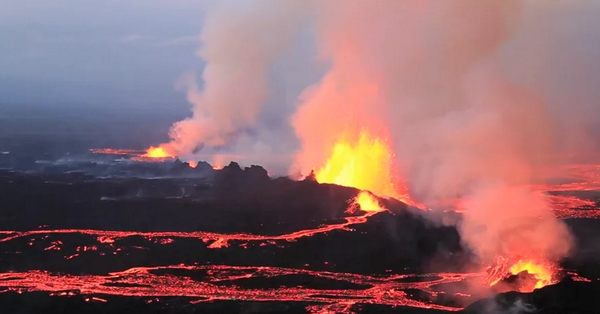

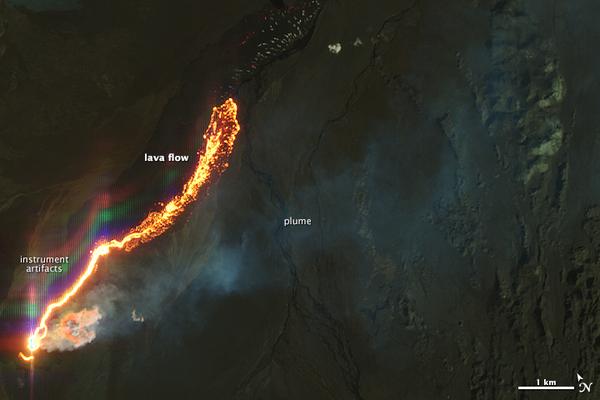
























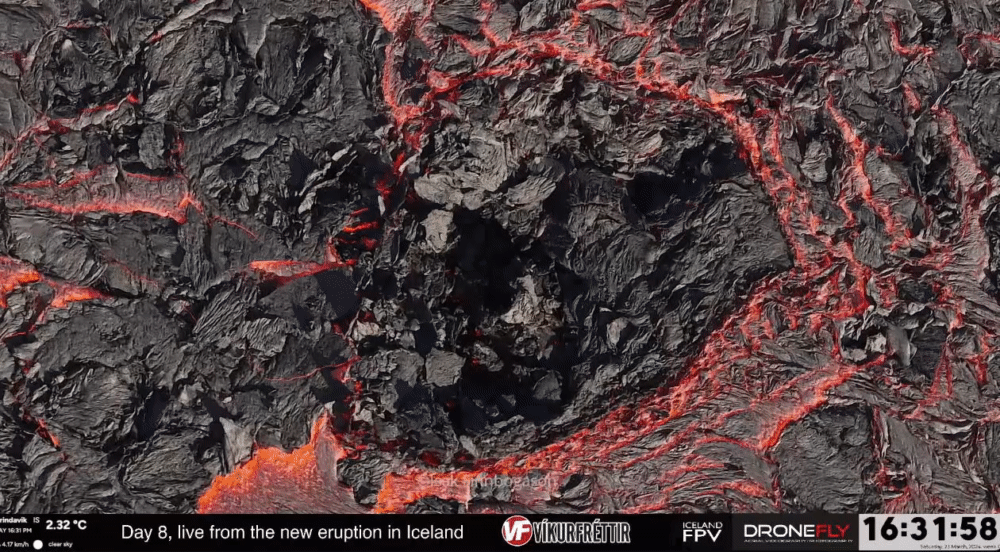


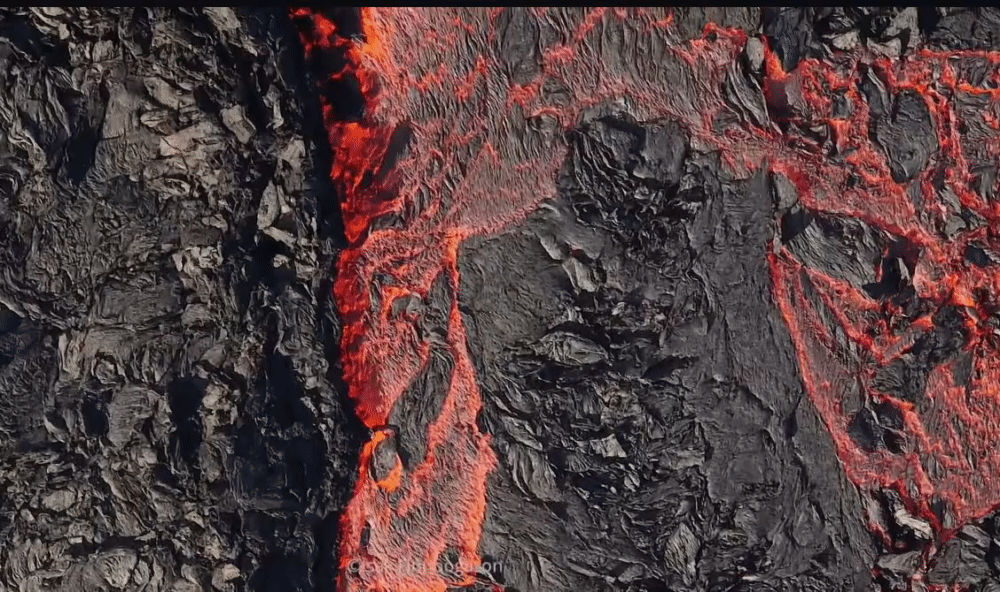

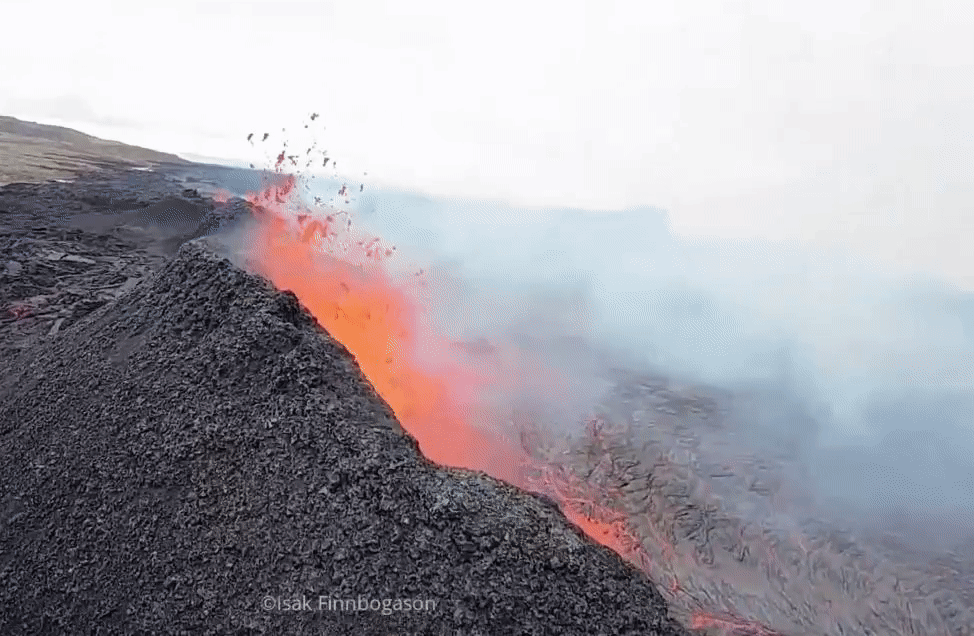





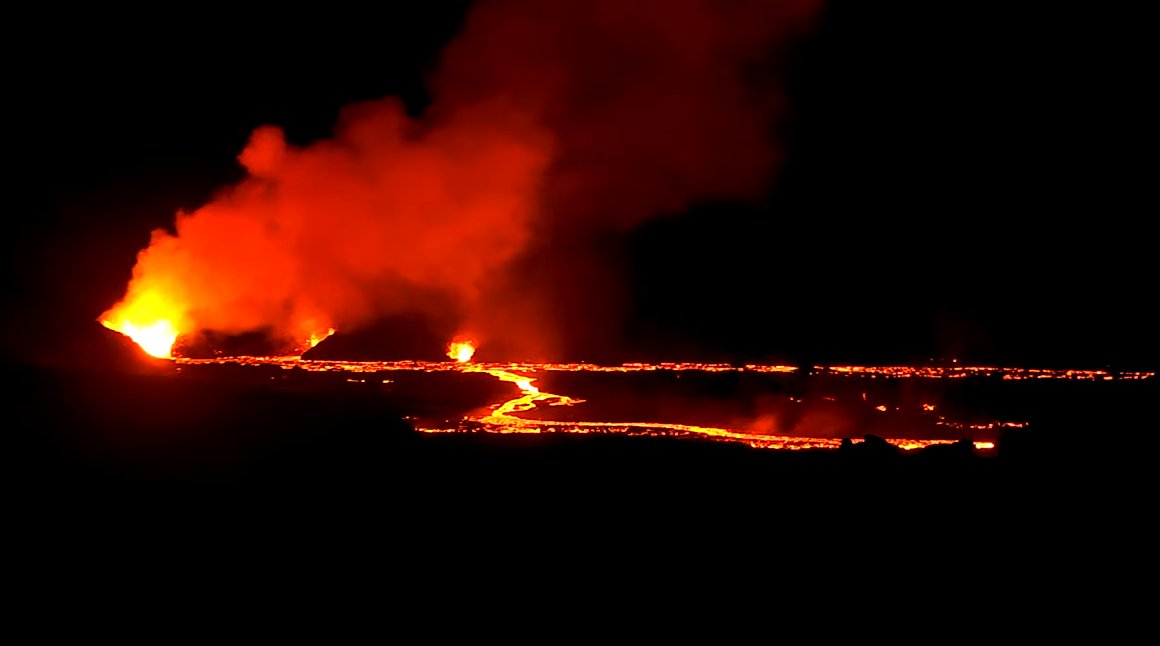







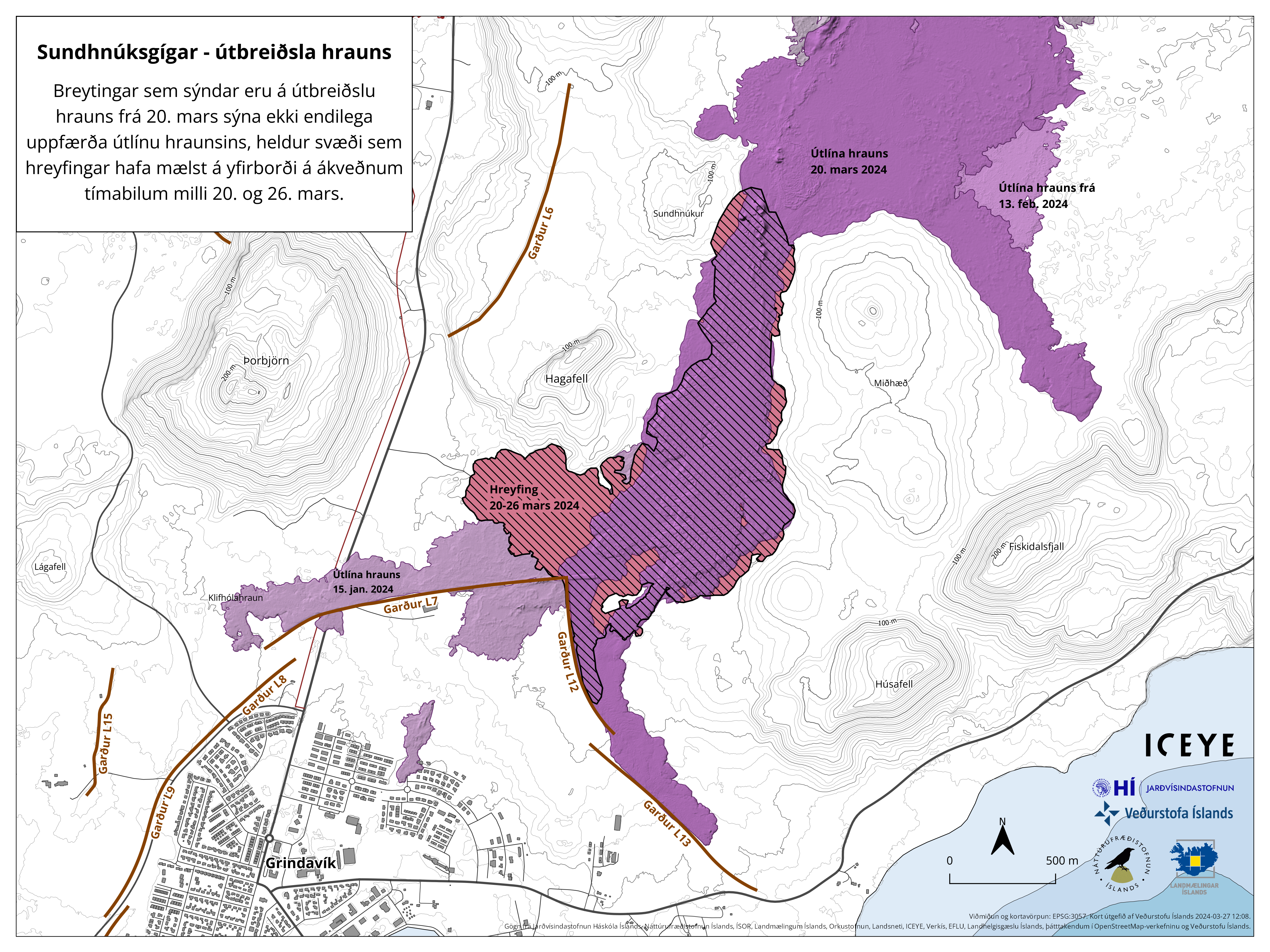
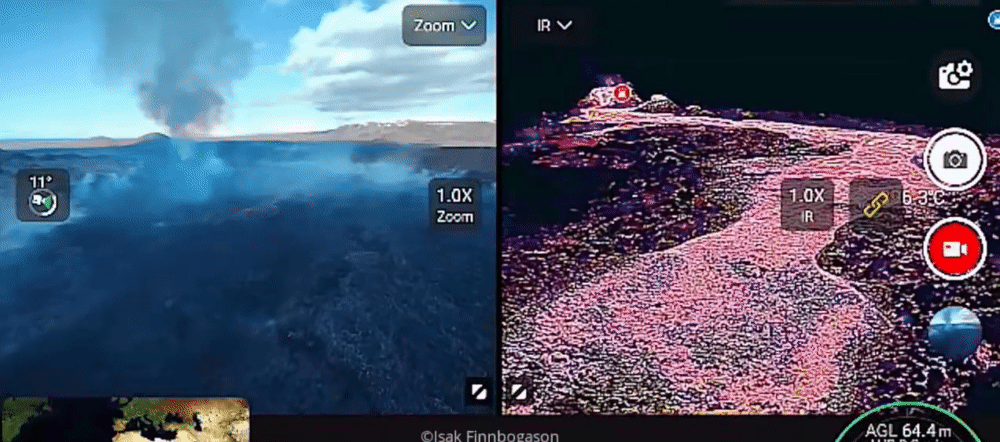




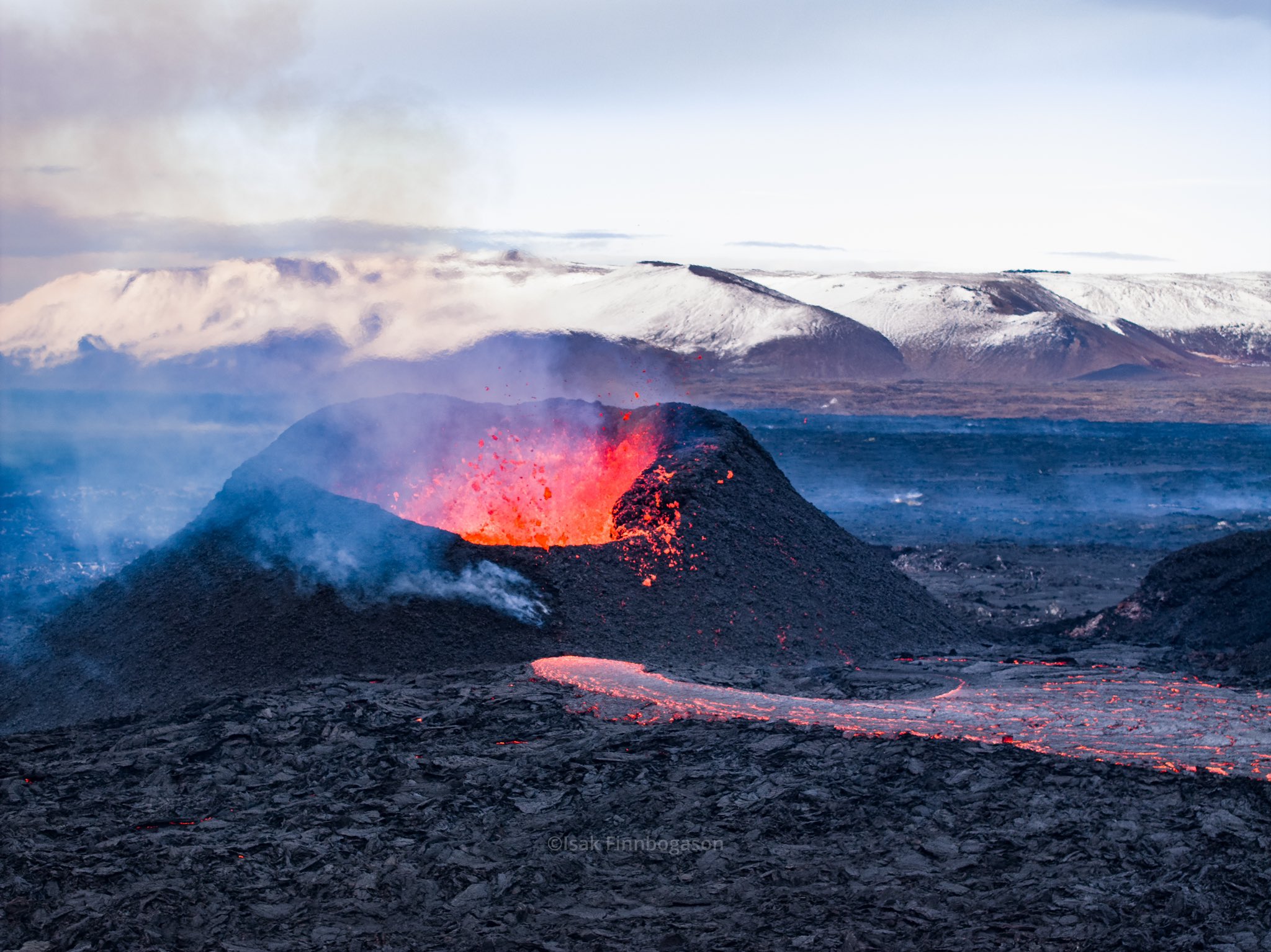
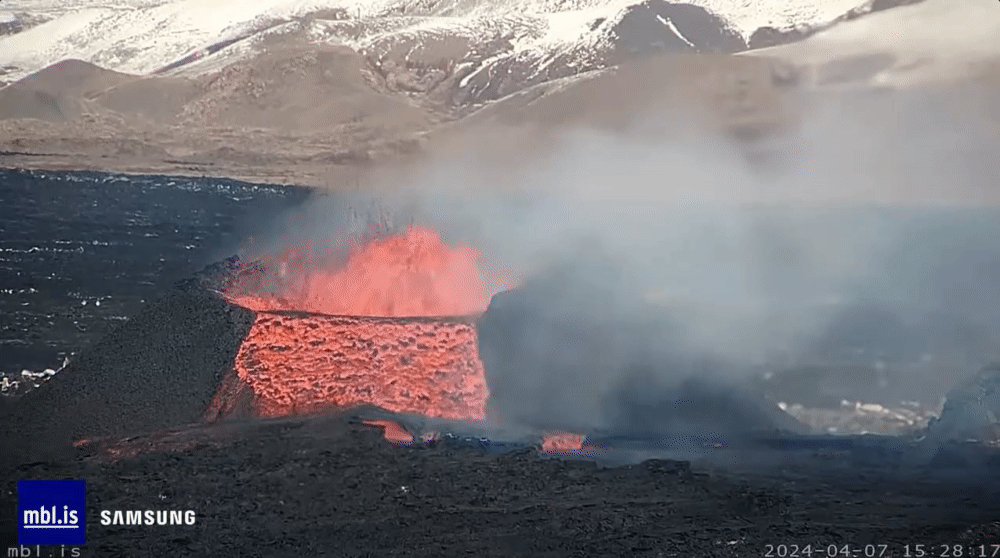








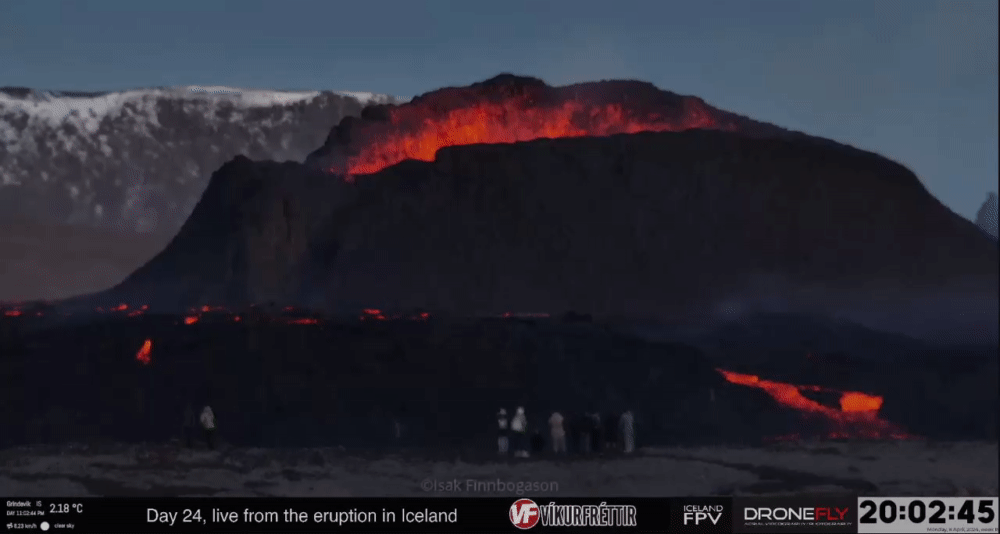
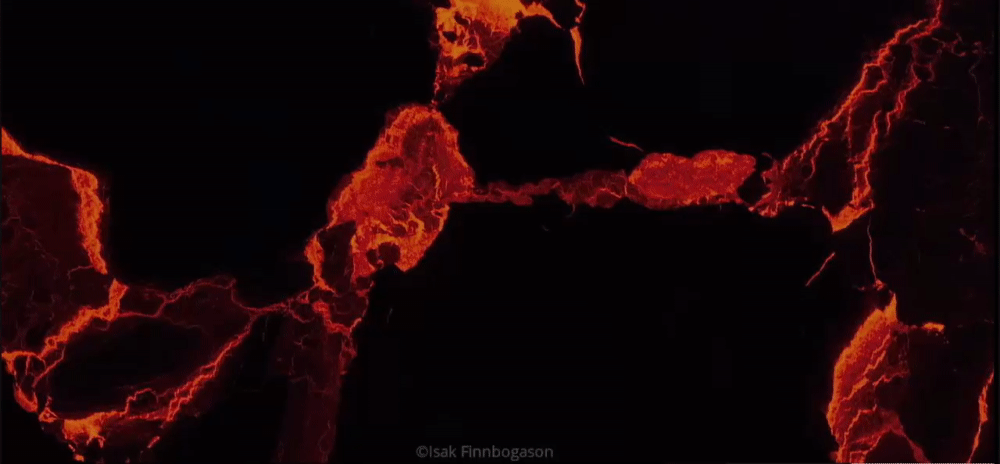
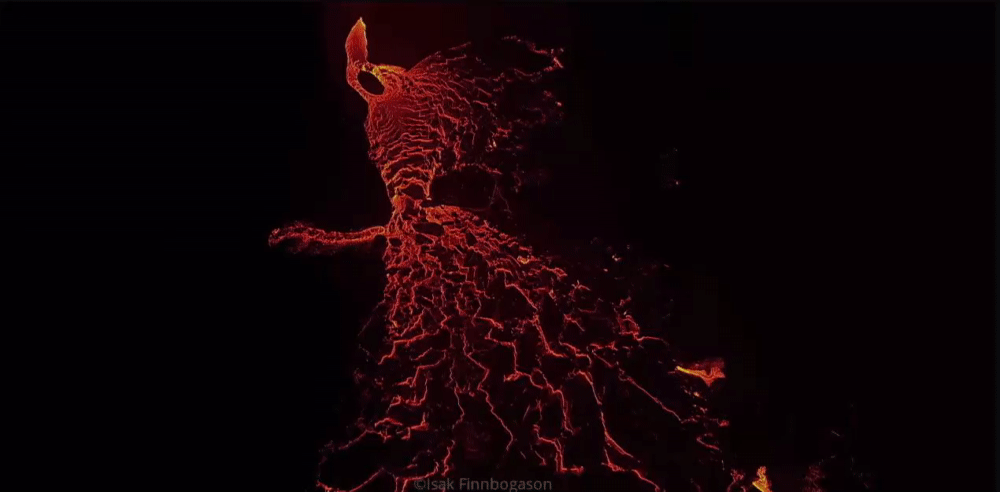
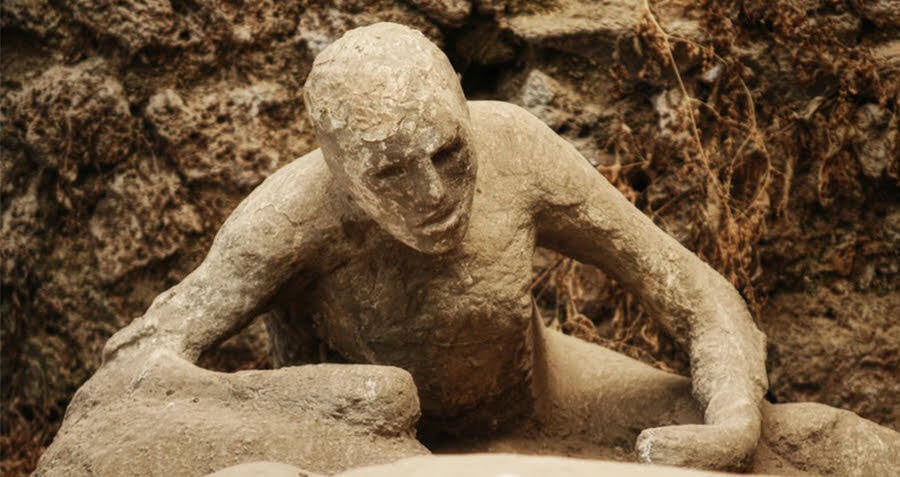

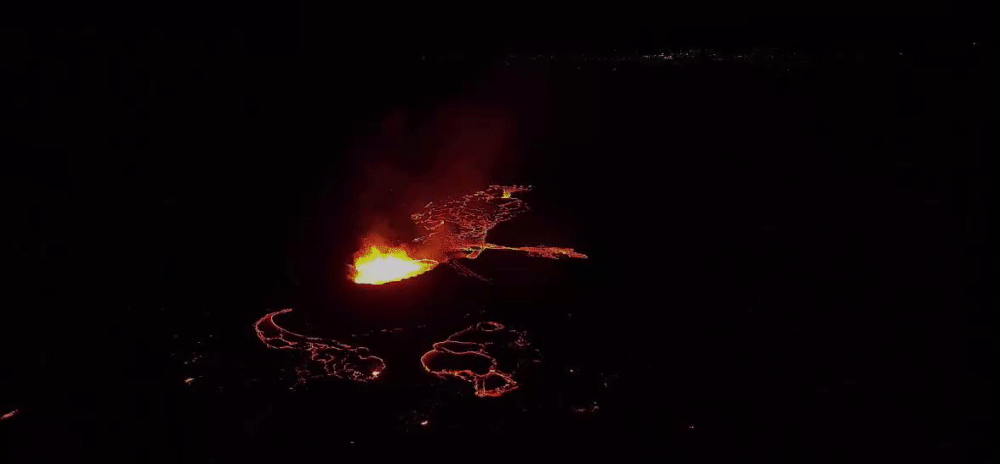
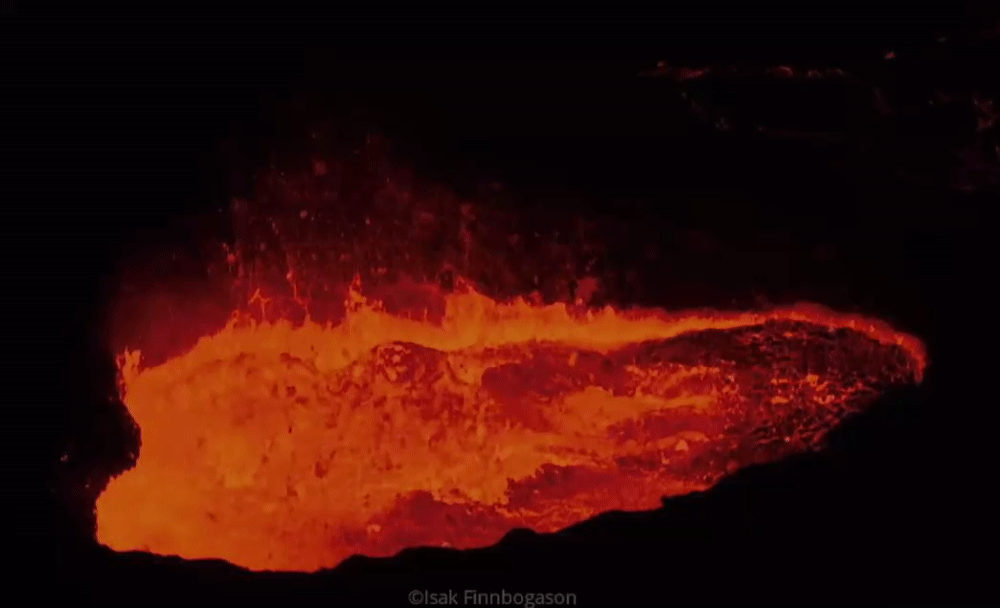
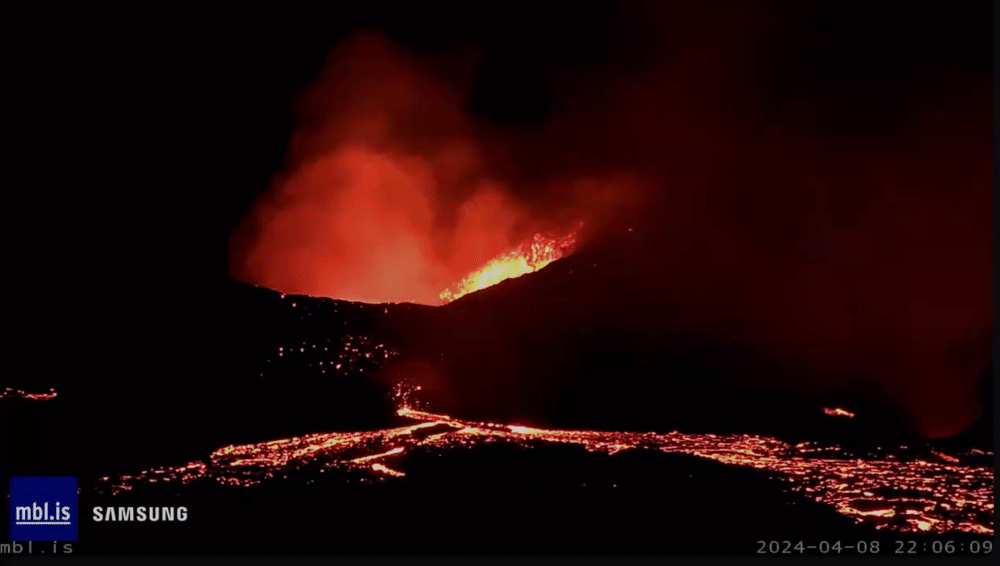

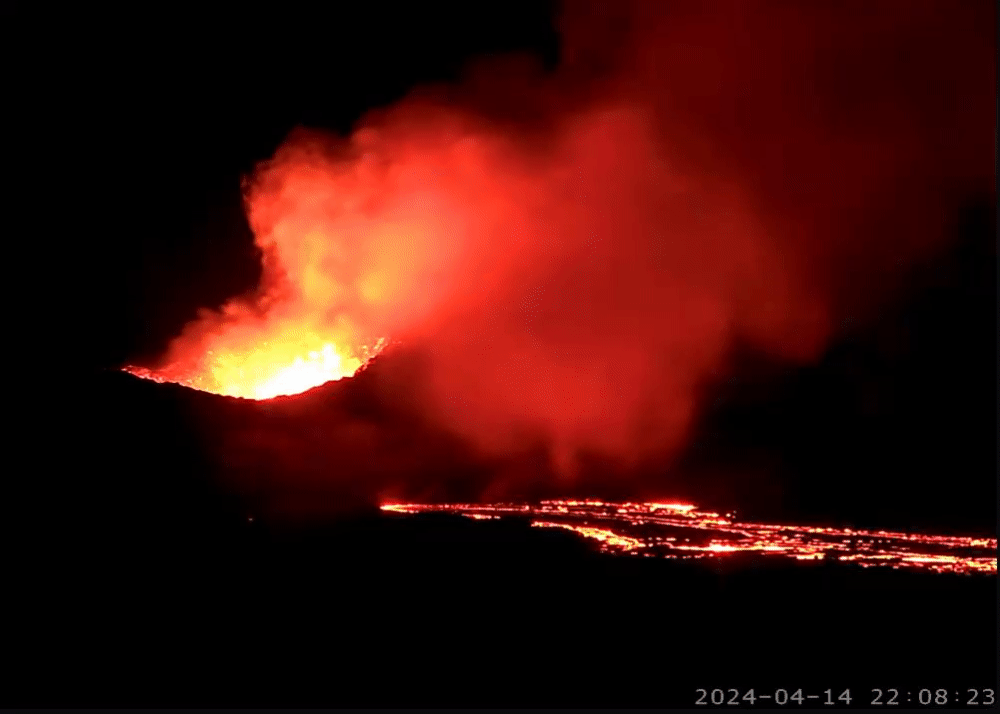

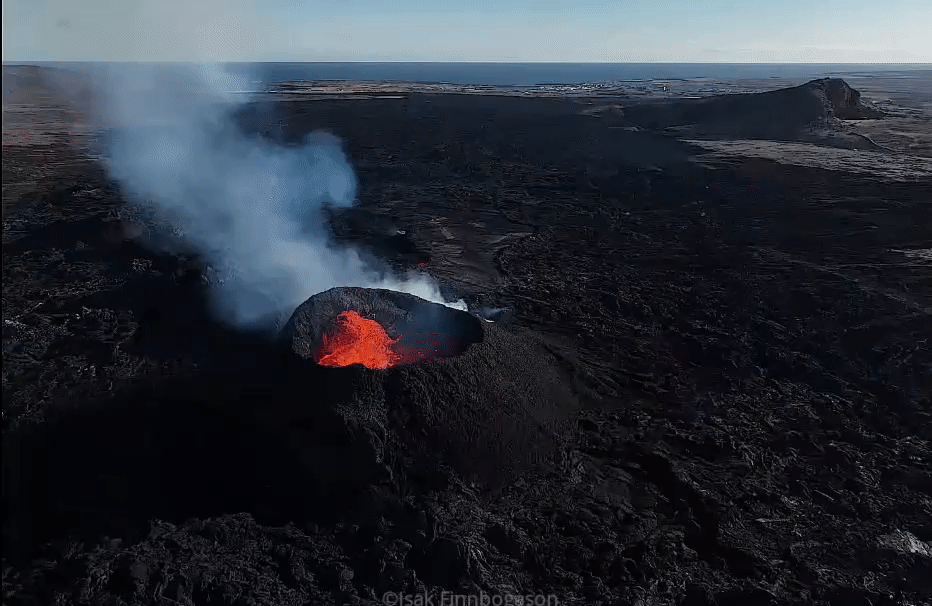



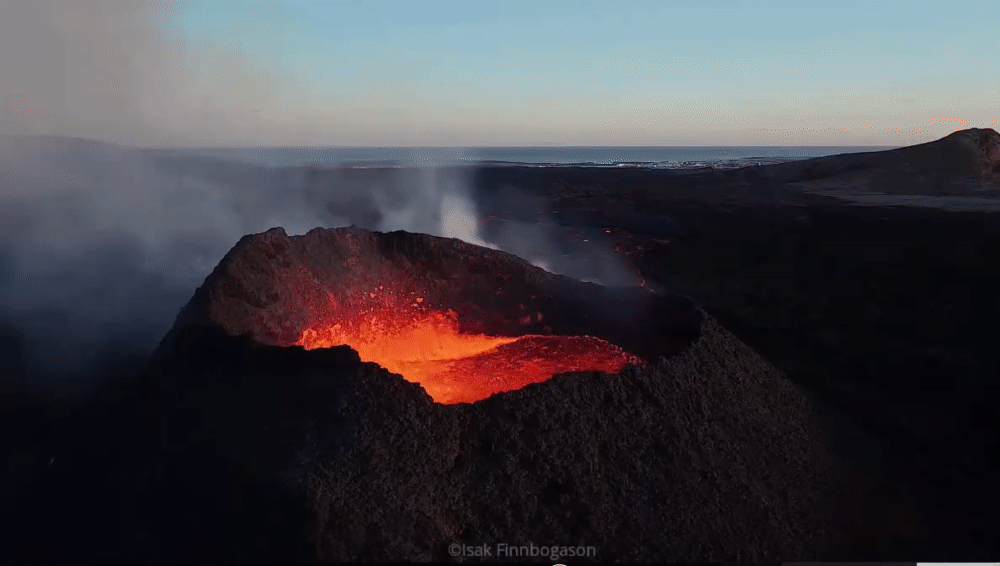
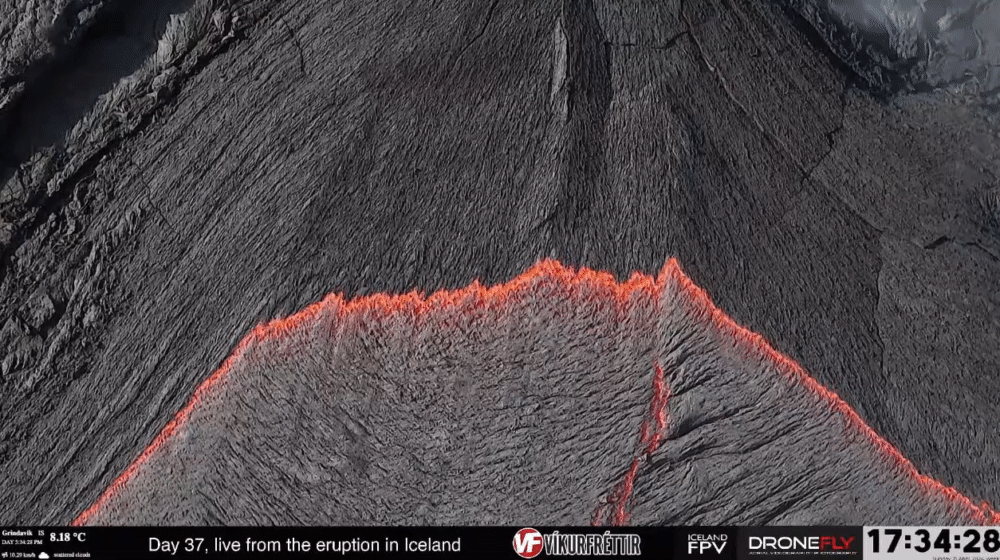

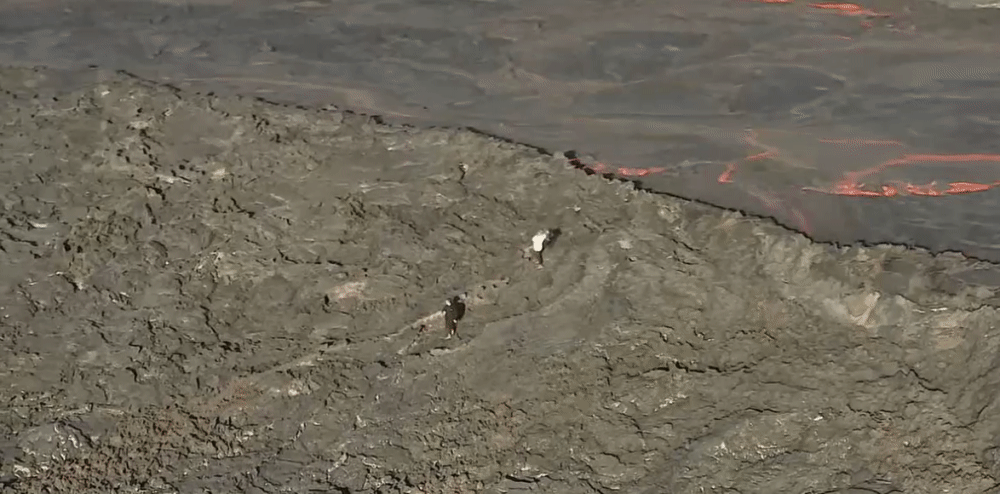


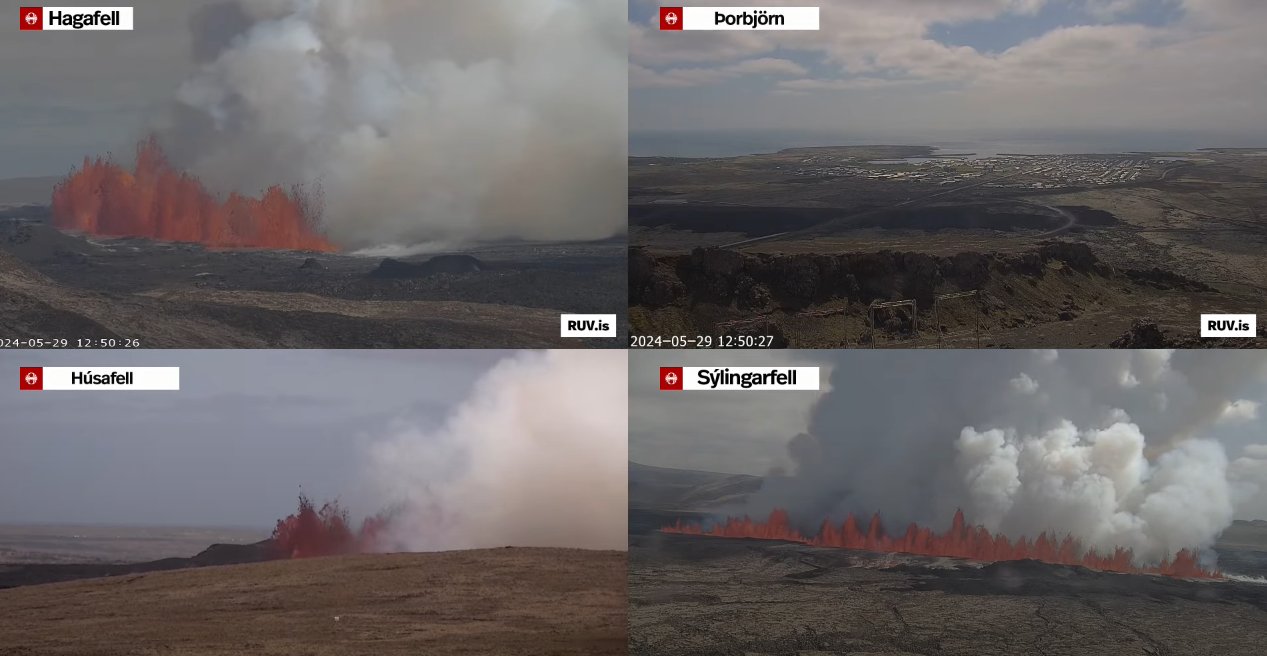




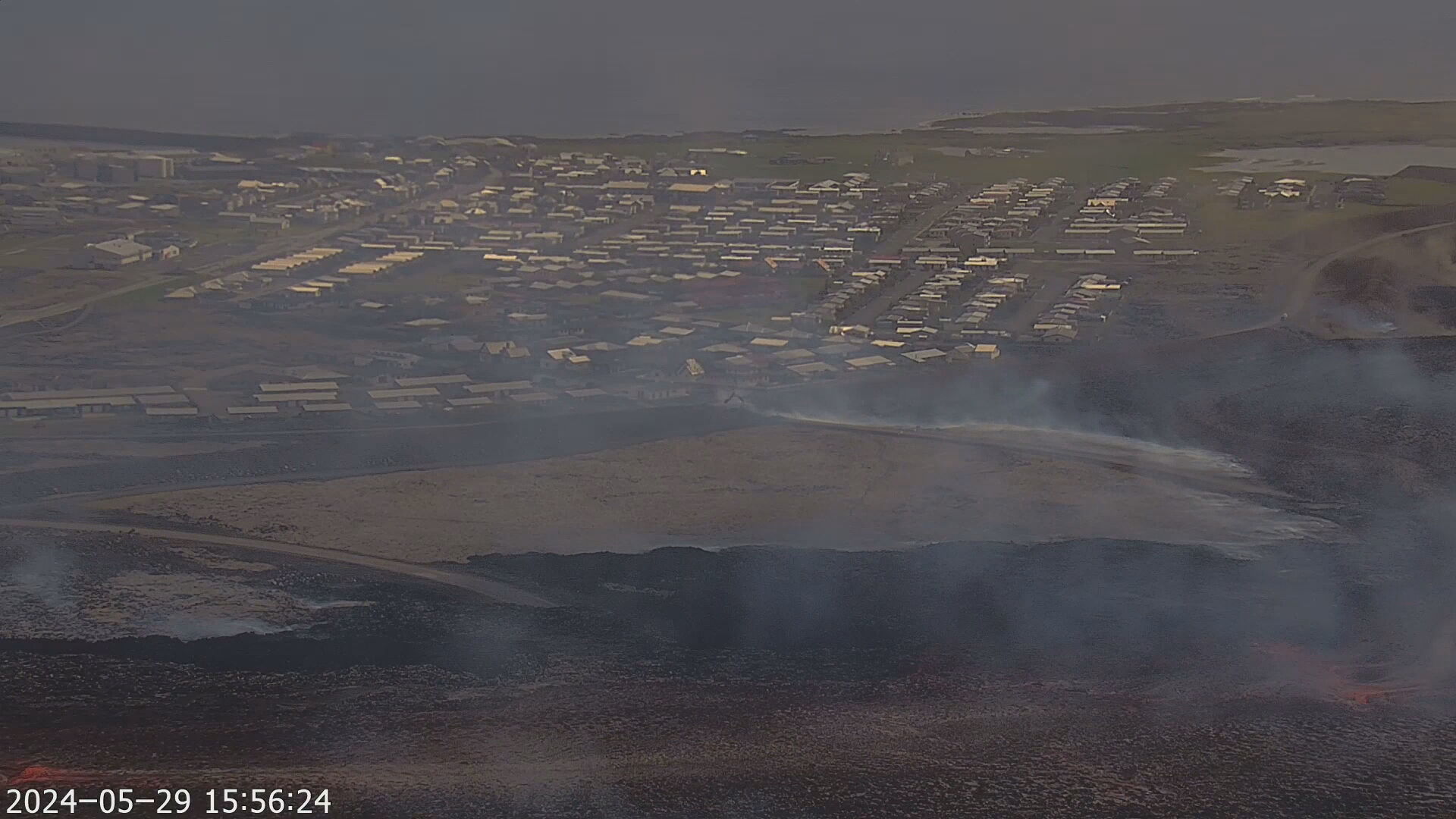

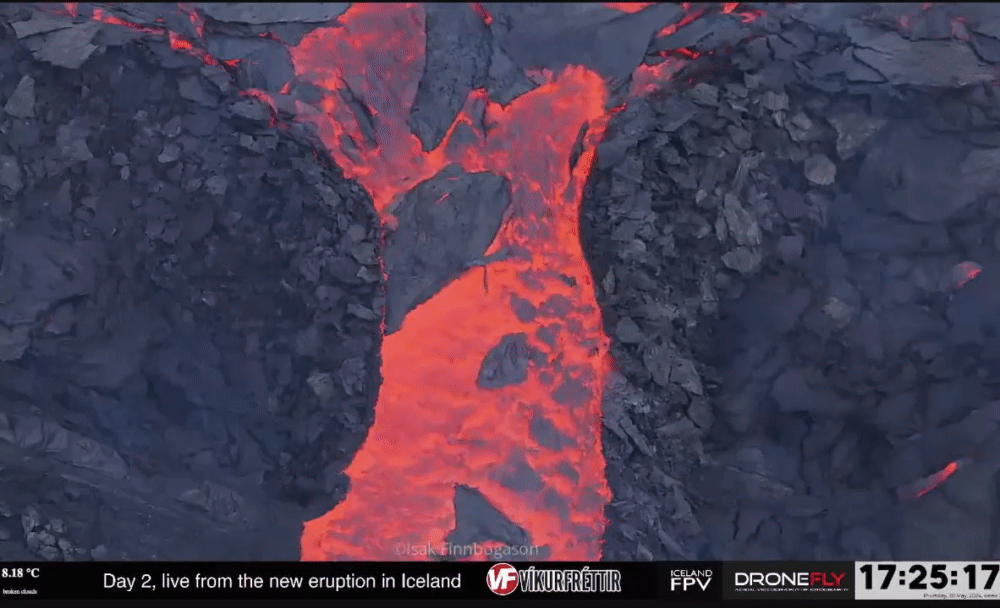
/frimg/1/49/54/1495406.jpg)
